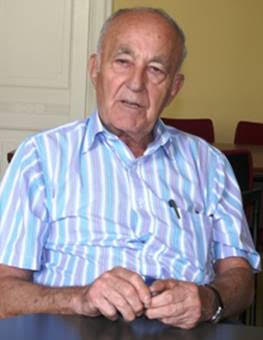
THE VOICE OF INTERNATIONAL LITHUANIA
|
VilNews has its own Google archive! Type a word in the above search box to find any article.
You can also follow us on Facebook. We have two different pages. Click to open and join.
|
Featured black
- Posted by - (2) Comment
LITHUANIA
A country you may think you know – but do you really?
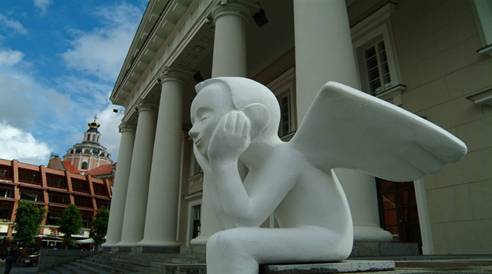
To read more, click on the below links
or search in our VilNews-Google archive above...
|
EUROPE'S LARGEST COUNTR
1. Lithuania was a world super power (1300-1600) – much longer than USA has been – stretching from the Baltic Sea to the Black Sea, considered Europe's largest country by then. |
A HAVEN OF TOLERANCE 2. Gediminas (1275-1341) – founder of Vilnius and the first Grand Duke of the family of Lithuanian rulers during 300 years– made Lithuania a 'haven of tolerance' according to British historian Norman Davies. |
|
STOPPING THE MONGOLS
3. Lithuania (the Grand Duchy) was the country stopping the Golden Hordes (the Mongols) from invading Europe (late 1300s) |
LAST TO BE CHRISTIANISED
4. Lithuania was the last European country to be Christianised (around 1400), and Paganism is still going strong here. Even Christian crosses sometimes contain pagan elements (sun, flowers, grass snakes). |
|
CRIMEAN-TURKIC PEOPLES
5. Karaims – the Turkic-Crimean people who guarded the Grand Dukes – came to Lithuania in 1397 – and the Trakai town (at the castle) near Vilnius is now their world capital. |
JERUSALEM OF THE NORTH
6. Napoleon Bonaparte named Vilnius Jerusalem of the North when he arrived here in 1812. Lithuanian Jews (the Litvaks) had an extraordinary life here for 600 years. |
|
EXCEPTIONAL ITALIAN INFLUENCE
7. Vilnius is the world's most Italian city outside Italy... Lithuania and Italy share a very unique common history. |
LANGUAGE CLOSE TO SANSKRIT
8. The languages Old Sanskrit and Lithuanian are having the same Indo-European roots. Incredible similarities between Indian and Lithuanian cultures since the early civilisations. |
|
NATIONAL REBIRTH 9. Lithuania declared independence in 1918, after 123 years of mostly Russian occupation. The interwar years were very successful and the country prospered immensely. Kaunas was the capital for the period 1919-1940, after Poland occupied Vilnius and southern Lithuania. |
300.000 DEPORTED TO SIBERIA
10. During 1940–1953, some 132.000 Lithuanians were deported to remote areas of the USSR. More than 70% were women and children. 30.000 died there due to climate, hard slave work and starvation. 50.000 were not able to return to Lithuania. During the same period, another 200.000 people were prisoned and 150.000 of them were sent to Siberian Gulags. |
|
HOLOCAUST KILLED 95%
11. The Holocaust in Nazi-occupied Lithuania resulted in the near total destruction of Lithuania's Jewish population. Out of more than 200.000, around 95% were murdered during WWII, the most tragic, worst example of Holocaust in the whole world.
|
PARTISAN WAR 1944-1953
12. 22.000 Lithuanian 'forest brothers' and 70.000 Soviet soldiers were killed in modern Europe's longest and bloodiest guerrilla war, after the Balts withdrew into the woods to organize their powerful armed partisan resistance when the Soviet Union re-occupied the Baltic States in 1944. |
|
SOVIET'S SILICON VALLEY
13. Post-war Lithuania became known as the Soviet Silicon Valley, and also today this country enjoys a very strong research and development sector. Lithuanian world-class specialists cooperate with NASA, NATO, Volvo, Saab, Philips, and many others in the fields of biotechnology, biochemistry, laser optics, chemistry, physics, etc. |
SINGING REVOLUTION
14. The Singing Revolution – that between 1987 and 1991 led to the restoration of the independence of Estonia, Latvia and Lithuania, culminating with the Soviet attack in January 1991 and the Union's fall later same year. In august 1989, two million people joined hands to form a human chain spanning over 600 km (370 mi) across the three Baltic States. |
|
50% LIVE ABROAD
15. Former President Valdas Adamkus was one among the tens of thousands fleeing Lithuania at the end of WWII. Chicago is counted as Lithuania's 2nd largest city, and it is estimated that around one million Lithuanians live in the U.S. A new wave of emigration started in 1991, and one expects that half of all Lithuanians now live outside their home land. |
LITVAKS IN THE WORLD
16. During the 19th and 20th century, hordes of Lithuanian Jews emigrated to the U.S. and South Africa (90% of its 100.000 Jewish population are from Lithuania). Litvaks are today playing leading roles worldwide. |
VILNIUS CATCHES AND CHANGES YOUR SOUL!
Russian writer Daniil Granin

17. Paris has its Eiffel Tower. London its bridges. Rome has the Colosseum. Washington has the White House, and Berlin its Brandenburg Gate. Vilnius has its wonderful, mysterious Old Town with narrow, winding streets, courtyards, cellars, smells, music of all kinds, and the very atmosphere of 700 years development of a Mediterranean-like city far away from mainstream Europe...
- Bookmark :
- Digg
- del.icio.us
- Stumbleupon
- Redit it
Strength and inspiration to women worldwide
- Posted by - (0) Comment
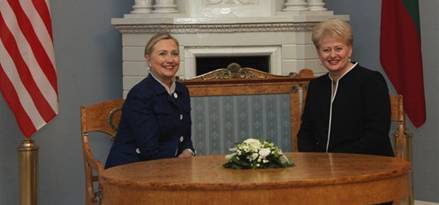
U.S. Secretary of State Hillary Clinton at same table in the Presidential Palace in Vilnius with Lithuanian President Dalia Grybauskaite yesterday.
Thursday, June 30, Vilnius - President Dalia Grybauskaitė thanked all of the participants from around the world who came to the Vilnius high-level conference "Women Enhancing Democracy: Best Practices" for their thoughts and ideas inspiring to work even harder for ensuring women full-fledged life.
The President underlined that such intense focus from the international community on the conference showed the great significance of the problems discussed. She pointed out that the stories told and the proposals made for enabling women to seek education, careers, self-protection from violence and discrimination had encouraged all to make even greater efforts and to better coordinate their activities.
"I am convinced that even in the digital age not a single of these projects would be effective if not rooted deep in the heart or implemented with love and commitment. There is no device to replace human activity and compassion," the President said.
According to Dalia Grybauskaitė, the good practices enhancing women's rights that will spread around the world from Vilnius, the new information heard and the new aspects noted at the conference will inspire active women to fresh endeavors and projects and will make them even more determined in actions towards improving the status of women worldwide.
Lithuanian Prime Minister Andrius Kubilius after the event said that the participation of US Secretary of State Hillary Clinton was of "immense importance".
"The US’s support through the whole 21 years of our independence, including our aspirations to become a NATO member, an EU member, to create our security, develop economic ties, energy independence, all these ties remain very important, and, of course, a conversation with Secretary of State Clinton in this respect is of immense importance," he said in an interview with News Radio.
- Bookmark :
- Digg
- del.icio.us
- Stumbleupon
- Redit it
Undervalued Lithuanian stars…
- Posted by - (2) Comment
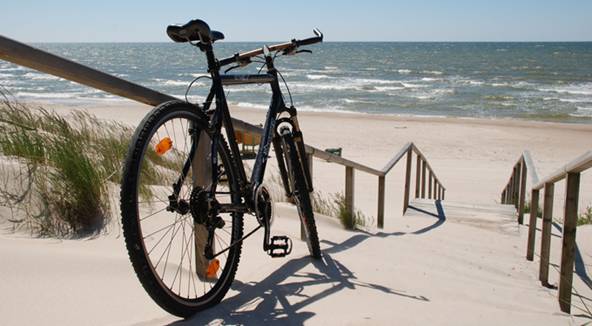
Palanga and its Vanagupe Hotel is among the author’s top Lithuanian favourites.
Photo: www.vanagupe.lt
Text: Thomas Danielsen, Baltic Travel Partner
After writing an article about the paradox of Lithuanian tourism, where I am not only negative, but also sarcastic and patronizing towards the people in charge of Lithuania tourism, I was thinking that it is time to try to write a positive article about Lithuania and tourism. The fact that I have called Lithuania home for 7 years and have worked with tourism (read: promoting Lithuania) for almost as long, there must be something good or great to show the international tourist. And believe me, it is! Vilnius especially, but also Lithuania in general, has a lot to offer in terms of being a tourism product. It is the seemingly total lack of strategy, knowledge and understanding of the concept of tourism and marketing of it that frustrates me (and I am not alone)!
It is possible to make a rather long list of what is "good" and what pose as an "opportunity" within Lithuania as a destination for the incoming tourist. However, one does need to bear in mind that there are many markets and many segments. So what might be of interest for one market/nationality might not be so appealing to another. I think that Vilnius has the most to offer in general, but again, depending on market, Klaipeda and Nida and the areas close by, due to this region’s historic links with Germany, might have more interest for the German market than Vilnius. But I would claim that the key products that Lithuania has on offer today, is what I will briefly state (I am not saying that these are the only ones - but from my point of view some of the more unique ones):
The capital of Lithuania, Vilnius, has to be in the first place. It has a beautiful UNESCO world heritage listed old town with many beautiful sights within itself. A simple stroll in the old town is a treat.
Uzupis is the most "undervalued" place in Vilnius
I think the bohemian area of Uzupis is the most "undervalued" place in Vilnius in terms of tourism and holds a great potential for tourism development in the future (think Notting Hill in London, Montmartre in Paris, Grünerløkka in Oslo, "The Valley" in Brisbane).
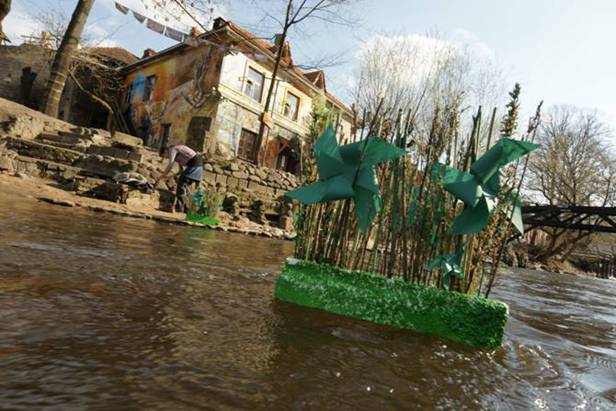
Užupis is an urban area of Vilnius characterized by dilapidated buildings, courtyards and side streets that haven‘t been renovated for decades. Photo: Andrius Ambramavičius
Talking about Vilnius for business tourists, there are pretty good facilities for conferences (though limited), but it is for incentive groups Vilnius really excels. The more popular activities which our agency sells is our very own "Vilnius Treasure Hunt", Kalashnikov shooting, Segway driving, ATV driving in a former military area, 4x4 driving, outdoor go-cart driving and more. The "KGB museum" (Genocide Victims Museum) and the TV tower are as well areas/sights we utilize.
Trakai Castle is a great place to visit
The Trakai Castle and its history from the Middle Ages and former capital of Lithuania is definitely a great place to visit (and the restaurant Round Table Club provides the most beautiful view from any restaurant in Lithuania!)..
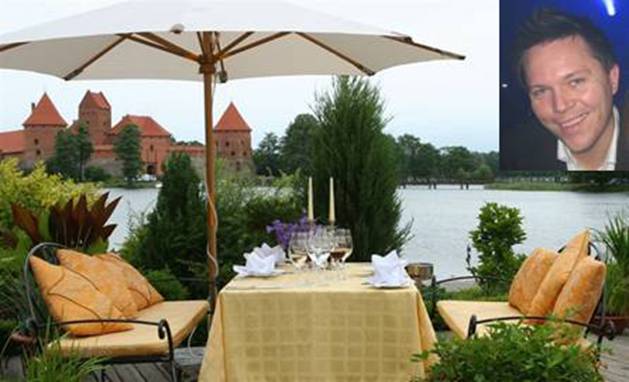
The author’s favourite view of the Trakai Castle, from the Round Table Club restaurant.
Nida, Klaipeda and Palanga are interesting areas especially when speaking about the German market and for the cruise market. The cruise ships sailing in the Baltic Sea towards Helsinki and St. Petersburg is a potential opportunity, however, it seems to be a long way to go (as Riga and Tallinn is way in front and has Klaipeda already lost that battle?).
I think that both Klaipeda and Palanga (Vanagupe Hotel in particular) are the most underrated towns for conferences! Future stars?
Druskininkai with its spas and leisure centres could become the leading star
Druskininkai with its spas and leisure centres could potentially turn into the leading star in Lithuanian tourism (and worth a case study in itself on long term planning and tourism and city development). Excellent spa, conference and leisure facilities presents Druskininkai with great potential in the near future. The biggest challenge though, is the distance from Vilnius and/or an international airport (especially talking about the international market).
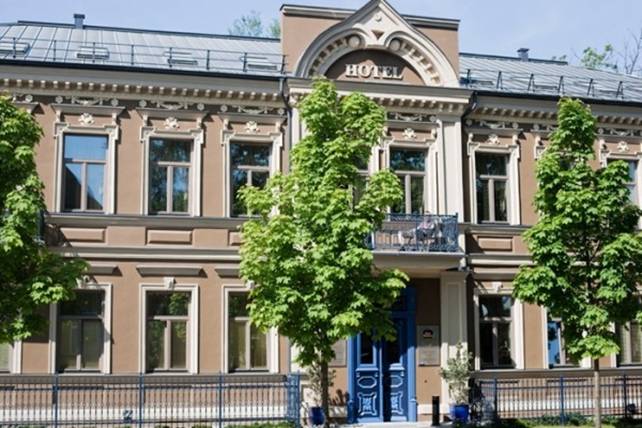
Best Western Hotel Central in Druskininkai.
Photo: http://centralhotel.eu/LT/Druskininkai
When I talk about Lithuanian tourism, I talk about it as a failure! It is however important to underline that it is not the product itself there is something wrong with. Far from it! It is the lack of management of the resources that is the problem! And if someone out there now cleverly wants to state that Lithuanian tourism is not a failure, that there are fast growth in both tourists visiting the country and flight connections to/from the 3 main airports in the country, that Vilnius get the highest rankings in ICCA for associating meetings in the Baltics, that we now have year on year growth of visitors every month, I will still continue to claim that Lithuania tourism is a failure! Why? Because it fails to be all it can be!
Thomas Danielsen
Partner / Project Manager
Baltic Travel Partner OÜ, Tallinn
Baltic Travel Partner SIA, Riga
Baltic Travel Partner UAB, Vilnius
- Bookmark :
- Digg
- del.icio.us
- Stumbleupon
- Redit it
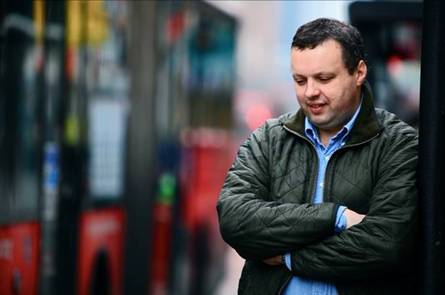
My name is Andrius Užkalnis, I am 40 and later this month I am coming back to Lithuania after a long time in England.
Photo: Otto Kylmala.
By best-selling writer Andrius Užkalnis
In three weeks‘ time, I will become a resident of Vilnius – again, after almost 17 years.
I was asked to write this for VilNews – where not many people know me. My name is Andrius Užkalnis, I am 40 and later this month I am coming back to Lithuania after a long time in England.
I moved to UK as a very young man, back in 1995, to work for the BBC, where I spent over 16 years – initially as a linguist and then as a manager, working in various parts of the world.
A few years ago I started writing – first for various magazines, both glossy and intellectual, then for national newspapers, then I published a few books and they were not entirely unsuccessful. Actually, all three went to be multiple-print-run bestsellers, one of them got translated into Latvian and published there too, so I suppose this counts as being an author of international acclaim, sort of.
I did bits of work for the Lithuanian national radio, commenting on various things British and international, and about a couple of years ago, a decision started to crystallize that it would be a good idea to go back.
Why? Because I can, because I can afford to, and because I felt I could do more in Lithuania, achieve more, be recognized and also enjoy a better living standard for my family and myself. In Vilnius, we can afford to live centrally – very centrally. In a house built in 17th century, in the very heart of Senamiestis, the Old Town, so that the closest patch of greenery would be Šventaragio slėnis, right behind the Cathedral, where they buried dukes and kings. The gothic marvel of St Ann’s will be my closest church. My girl’s school will be three minutes away, overseeing the ancient church spires and monasteries in a picture-perfect postcard view out of their classroom windows.
This would be an equivalent of living across the road from St James’ Park in London. I could never afford to have it in England. It would not be a realistic prospect. In Reading, Berkshire, where I live, there are people boarding a train to Paddington every morning, with Savile Row suits, going to their £200,000 jobs in London. They are easily in the top 2% of the population, income-wise, and they still have to commute to work.
My wife, Lina, is Lithuanian too, she is a linguist specializing in legal documentation and has her own practice and can work from wherever she wishes. More importantly, she also wants to live in the Old Town. She was born in Vilnius (I wasn’t – I am a Kaunas boy and moved to Vilnius when I was six), and the pavement stones and the old spires and terracotta roofs and the courtyards mean as much to her as they do to me.
When I write for the Lithuanian papers, people comment a great deal online, and because my writing is often provocative and edgy, a lot of people feel they have to have to try and insult me, which is not very easy because I am not a very sensitive person and when they spit fire, it amuses me.
One thing they sometimes say, trying to be sarcastic: “Why won’t you write for any English papers then? They won’t publish this crap, eh? But in Lithuania, anything goes, right?”
There is a degree of truth in that. Even if I were to get my articles published in UK, I would be one of the many, many columnists, and would have to compete with the Titans. My books would have to compete with thousands of books that hit the shelves here, and many of them are very good books. The chances of hitting the “A” list would be very slim.
So I figured I can play my game where chances of winning are higher. I do not think there is a shame in that.
Other people say: “So, the BBC must have kicked you out. You are just a loser, then. You now come back, having achieved nothing.”
The BBC did not kick me out. I left on my own accord, with no regrets, but with no hard feelings, either. I had sixteen incredible years doing very exciting work for arguably the biggest and the most respected international broadcaster in the world. I travelled the world and hired and trained people on three continents.
I flew a helicopter to work once. In Russia, I drank vodka on business to appease an apprehensive and make him trust me, even though the next morning I had to fly to Osaka and then to Chicago and all the drinking felt like I was not getting paid enough to do this. I commuted in Japan from one airport to another by train, straight after a 12 hour flight, for an onward flight to Russia’s Far East, arriving half-dead, knowing I had meetings in less than nine hours next morning, and then the hotel bar staff in Khabarovsk made me and my colleague sing karaoke in English for them. I flew a Boeing 747-400, converted to a commuter short-haul plane and painted in Pokemon colours, from Tokyo Haneda to Sapporo Chitose, as part of my job. I commissioned desks and shelves for my office from a workshop in Ghana where the main line of business was coffins, and when a man died, the supply of furniture would be delayed. I took a tour of duty to a small radio station near the Volta River and people accosted my car selling tiny fried fish – to them, a white man was a wealthy customer – and that was my business lunch. Not a lot of people can say this about their jobs. I often felt I had the best job in the world.
I have met very talented individuals and I largely did not have to compromise my beliefs and principles: the less attractive part of the BBC was not closely related to the job that I was doing. I am talking here about the institutional left-wing bias of the programme-making frontline staff, the health and safety paranoia, the political correctness, the risk aversion, the clinical Euro-enthusiasm and rabid pro-federalism, the relativist multicultural claptrap and the treatment of the global warming hysteria like it was science and not religion. I did not have to be complicit in any of this, and for this I am grateful.
There is also another aspect to my desire to come back. In England, I felt I would always, always be a foreigner (and, being a Lithuanian, with a clear mark of Gastarbeiter at that). England is one of the most open societies that I know, and no-one ever gave me hard time because of my origins, but I was always an outsider. Not that I was very concerned about my status. I knew who I was and what my family was, I knew my girls went to a private school, the house that we lived in and the car we drove and the holidays we took were nothing to be ashamed of, but I just did not feel I was one of the people who ran things in this country. Not at the forefront of everything. Not a household name.
In Lithuania, it is different, and I am not ashamed to say that I am looking forward to this too. People in Lithuania know my name and even sometimes say hello in the street. People come to meet me when I go on book-signing tours. Producers invite me to their talk shows on TV and journalism students email me and ask for my opinions. My daughters know that their Dad’s books are in every bookstore. I would be lying if I said it was not gratifying. Or that I would forgo this and choose anonymity.
I am leaving England with a sense of gratitude. I learnt a lot here and I would be a very different man without this experience. If I were 23 now, I would again sign a contract and go to a strange country to work. I would do it again.
But now I feel it is time to try something else in life. Because I know that I am incredibly privileged for having an opportunity, at the age of 40, to try something else in life. Other people at this age would try a new spouse or at least a new car. Or a hair colour. My family and I can try the whole new life. If that is not an opportunity, I don’t know what is.
And because of this, I am going to become a resident of Vilnius in three weeks’ time.
- Bookmark :
- Digg
- del.icio.us
- Stumbleupon
- Redit it
- Posted by - (3) Comment
How did communism influence Lithuania's economic development?
A report by: Valdas Samonis
The Institute for New Economic Thinking, USA
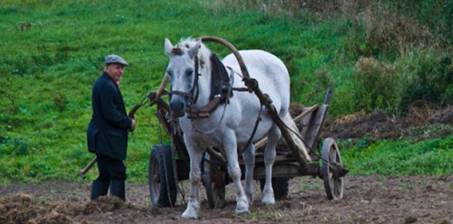
Photo: http://www.landesa.org/where-we-work/more/lithuania/
In 1940, independent Lithuania produced per capita 1.9 times more meat, 2.8 times more milk, had 1.9 times more cattle and 2.7 times more pigs than Soviet Union. After 50 years of allegedly astounding economic progress, Soviet Lithuania had become dependent on subsidies from Moscow. To the extent that this assertion is true, how is this possible if not for the inefficiencies caused by the forcefully imposed system of central planning with its associated distortions?
Noncommunist Lithuania fed and clothed its citizens without any assistance from abroad during the interwar independence period. And the levels of agricultural production were high by comparison to the Soviet Union;
Following its forceful incorporation into the Union of Soviet Socialist Republics in 1940, Lithuania was subjected to the Soviet development model based on Marxism-Leninism, as interpreted by the Communist Party of the Soviet Union, as its theoretical underpinning; the first "scientifically based economic system in human history", as Bolsheviks claimed. The Bolshevik interpretation of economic processes and development goals was made obligatory in both the theoretical and practical dimensions. New methods of economic management /central planning/ were introduced which deeply changed the entire decision-making processes. The country's economic administration was completely overhauled. The Soviet occupation of Lithuania lasted nearly half a century.
|
|
What an intellectual shame to Western universities and other elites!" |
|
|
|
HELD BACK IN THE USSR:
RETARDING EFFECTS OF COMMUNISM ON ECONOMIC DEVELOPMENT OF LITHUANIA
Valdas Samonis
The Institute for New Economic Thinking, USA
Dedicated To Those Dead or Alive Whose Blood and Brains Made Free Lithuania Possible
ABSTRACT. Even if it brought some peculiar kind of economic growth /rather of cancer type/, the communist system imposed by the USSR has taken Lithuania's and other formerly oppressed countries' comparative economic development levels at least two-three decades back. This essay gives the first approximation of direct, roughly measurable retarding effects of communism /sovietization/ on economic development /summarily captured by the proposed Communist Retardation Indicator (TM), CRI/. It leaves out various kinds of negative indirect effects, e.g. huge human costs. The essay serves as a reality check on inflated expectations regarding the welfare effects /living standards/ of the transition processes in former communist countries some twenty years after the start of transitions to markets and democracy. The growth slowdown and the rise in unemployment in such countries as Lithuania, other Baltics, Poland, etc, are due in a large part to the legacies of the communist system catching up with and neutralizing considerable efforts at continued reforms. Such a reality check is useful for shaping further transformation policies so that they are better grounded in what is possible and advisable under the circumstances. Clearly, it will take a long time to fully recover from the "benefits" showered on Lithuania and other formerly communist countries by the “scientifically based” Soviet communist system.
1. Introduction
Following its forceful incorporation into the Union of Soviet Socialist Republics in 1940, Lithuania was subjected to the Soviet development model based on Marxism-Leninism, as interpreted by the Communist Party of the Soviet Union, as its theoretical underpinning; the first “scientifically based economic system in human history”, as Bolsheviks claimed. The Bolshevik interpretation of economic processes and development goals was made obligatory in both the theoretical and practical dimensions. New methods of economic management /central planning/ were introduced which deeply changed the entire decision-making processes. The country's economic administration was completely overhauled. The Soviet occupation of Lithuania lasted nearly half a century.
After the period of heroic armed resistance during 1945-1953, the Lithuanian struggle for freedom adopted less dramatic methods and more covert forms. However, with the advent pf Gorbachev’s perestroika, the Lithuanian drive for independence intensified and adopted open forms since 1988. This provoked a harsh reaction in Moscow. Among a number of the lines of criticism, the alleged economic irrationality of such ambitions stands out. Soviet officials maintained that Lithuania has gained a lot from its "accession" to the USSR: what in 1940 was an underdeveloped, agricultural country, by 1990 was transformed into a developed, industrial Soviet republic. This essay sets out to verify such claims.
The main problem is that after the forceful incorporation, most formerly used market economy based yardsticks and indicators of economic development were replaced by the new ones, adversely affecting the comparability in time and space. The matter has been further complicated by the secretive and distorting nature of Soviet statistics. All in all, the shortage of reliable data makes it all but impossible to come up with precise figures. However, some first approximation can be made.
The aim of the article is to examine claims regarding economic development under communism in some detail permitted by the availability and quality of data.
The main goals of the article are:
· To evaluate direct, roughly measurable effects of communism on economic development of Lithuania and propose the Communist Retardation Indicator (TM), CRI;
· To analyze the effects of communism by the sectors of economy;
· To indicate the main problems to be dealt with shaping further transformation policies for Lithuania, other post-Soviet countries.
The methods applied are the main methods of economic analysis and synthesis, management theories.
2. The Primary Sector
With three quarters of its labor force
employed in agriculture, Lithuania was a predominantly agricultural economy in
1940. Half a century later, the agrocomplex still occupied a special role in
the Lithuanian economy, providing about a quarter of jobs and more than half
the national income [Zinkus 1986, 186; How Will... 1990]. As in 1938-1940,
basic crop and milk yields in Lithuania were in general considerably lower than
in neighboring Western countries /see Table 1/:
Table 1. The Comparison of Yields in Several Countries: Crops /in centners per hectare/ and Milk /in tonnes per cow/:
Rye Wheat Barley Milk
|
Year |
1938 |
1987 |
1938 |
1987 |
1938 |
1987 |
1970 |
1987 |
|
Country: |
|
|
|
|
|
|
|
|
|
Lithuania |
12 |
28 |
12 |
39 |
13 |
31 |
2,9 |
3.6 |
|
Finland |
16 |
22 |
20 |
23 |
16 |
25 |
3.7 |
5.0 |
|
Sweden |
20 |
40 |
27 |
48 |
24 |
38 |
4.0 |
5.8 |
|
Denmark |
20 |
38 |
35 |
- |
34 |
45 |
3.9 |
5.9 |
Source:. [Lithuania's ... 1990].
Even more important and telling is a considerable lag behind the West in the indicators measuring the efficiency of agricultural production. In 1981-87, Lithuania reached roughly one fourth of the American labor productivity in agriculture [Lithuania's ...1990]. Generally, Lithuanian agricultural production costs were two to three times higher than in Western countries [How Will ...1990]. Yuri Maslyukov, Chairman of the USSR State Planning Committee /Gosplan/, claimed that the Lithuanian agriculture was running at a loss of rb172 million to the central budget [A Discussion ...1990, 37]. How was this possible?
Noncommunist Lithuania fed and clothed its citizens without any assistance from abroad during the interwar independence period. And the levels of agricultural production were high by comparison to the Soviet Union; in 1940, independent Lithuania produced per capita 1.9 times more meat, 2.8 times more milk, had 1.9 times more cattle and 2.7 times more pigs. After 50 years of allegedly astounding economic progress, Soviet Lithuania has become dependent on subsidies from Moscow [Terleckas 1990]. To the extent that this assertion is true, how is this possible if not for the inefficiencies caused by the forcefully imposed system of central planning with its associated distortions?
For decades, the mainstream of the Soviet economic literature attempted to present the system of central planning as perhaps not yet perfect in some respects but certainly - for the first time in human history -based on scientific foundations. Many authors claimed that because of the planned nature of the system – an embodiment of the scientific truth in economic management - it is capable of fully harnessing objective laws of science to work for the benefit of broad masses, thereby avoiding distortions and costs characteristic of the chaotic play of market forces under capitalism.
The reality has been diametrically opposite, however. Let's take just one example. The Soviet-style indicator of technological progress is the power of machines, their size, and their numbers: the larger, the better (“chem bolshe, tem luchshe”). The apocryphal story has it that, to prove their technological superiority, the Soviets were intending to build the world’s largest microcomputer!
The communist penchant for size led to the overproduction and overuse of very heavy machines like the Kirovets tractor K-700. The use of such a tractor is not only ecologically damaging but causes the hardening of soil, destroying its structure, drainage systems, and leading to the wheat harvest reduction by 30-50%! Similarly, it has been proved that such tractors, their excessive numbers, and other distortions have been detrimental to the agricultural production in Lithuania as well as the USSR in general [Aganbegyan 1988, 35-36; Wolfson 1988; Duda 1990]. It is estimated that just between 1961 and 1988 the losses in the Lithuanian agriculture as a result of systemic inefficiencies were more than rb90 billion [Lithuania's ...1990].
What is more important than the above losses is the impact of the sovietized economic structure and work ethic in agriculture on the prospects for a radical reform undertaken in Lithuania over the last decade. The forced collectivization and statization has been accompanied by a thorough and indeed criminal destruction of farmsteads and family farming in general. Privatization including the restitution of property is therefore the necessary precondition for the introduction of market forces [Hinds 1990; Balezentis 1990]. This proved to be difficult for at least two reasons. First, although collective farm lands can be distributed among individual families, there are no buildings nor machinery with which to work the land. Second, the whole way of life /family farming/ has been subjected to a "fifty-year moratorium" [Kazenas 1990]. The qualities of a farmer, proud and wise lord of land are close to extinction. There are agricultural workers instead, with little or no initiative and poor work ethic. The magnitude of change can only be compared to the transforming of feudal land laborers into peasant farmers. Family farming was criminally destroyed in a couple of years, its rebuilding will take decades [Vel ..1990; Laird 1990].
3. The Secondary Sector
The secondary sector in Lithuania is dominated by industry since mining is nonexistent due to the almost complete lack of natural resources. Soviet sources claim that Lithuania's industrial output has increased an impressive 84 times in the period of 1940-1990 and such industries as machine tools, ship-building, electrical engineering, etc, were created from zero [On the "Lithuanian ... 1990].
In light of rather recent revelations concerning the growth and relative size of the Soviet economy, it is hard to see how this figure could be taken at face value. For example, two glasnost era authors, Vasilii Seliunin and Grigorii Khanin [1987], argue pretty convincingly that in the 1928-85 period Soviet national income grew only 6-7 times and not some 90 times as officially claimed. The mystery may never be entirely solved. Central to the problem of separating inflation from real growth is the measurement of qualitative change in the absence of market verification which was the case under the Soviet system. It can be concluded at the very least, that the Soviet-style measurement of qualitative progress /using such "objective" characteristics as capacity, size, and weight/ may be at the root of a substantial upward bias in the official Soviet statistics [Kushnirsky 1989; 294-301].
There are some additional specific problems with the assertion about the rate of industrial growth in Lithuania. First, the latter part of the assertion provides explanation for the former one: such a high growth rate was recorded largely because the base year output was low or even zero.
It is a well-known statistical effect that base year quantities close to zero make it "easy" to achieve impressive growth rates. Second, most of this growth is of a peculiar, Soviet-type variety. For systemic reasons, the Soviet Union used much more input for a given quantity of output than is the case in the West. For instance, steel, oil, and gas were used in the USSR about three times less efficiently than in France or United Kingdom [If Gorbachev ...1985; Aslund 1989, 16-17]. Similarly, relative to Sweden or Finland, Lithuania consumed 1.5-2.0 times more energy, wood and metals per unit of output. Heating one square meter of living space in Finland requires about 20 kg of fuel, whereas in Soviet Lithuania - 60 kg [How Will ... 1990].
What this boils down to is growth for the sake of growth: more coal is mined to produce more metal which is used to build more mines so more coal is mined and so this environment-degrading "development" cycle goes on. To use a medical metaphor, it's a cancerous growth. Although their populations were forced to make huge sacrifices for development /20-40% or more of all the goods and services produced went to investment - a good measure of the rate of exploitation/, centrally- planned economies seemed never to mature, exhibiting features of permanently developing countries [Winiecki 1999; Zwass 1987, 172-176]. Third, the Soviet-type industrial growth forced on Lithuania disregarded the structure of its economy and human resources and produced excessive dependence on Soviet inputs, particularly raw materials. It is primarily Union-subordinate industries which were growing rapidly, using mainly /some 60-80%/ imported raw materials and shipping large parts /50-60%/ of their output out of Lithuania [Lithuania's ...1990]. This pattern of the division of labor may have well served Moscow's military and other imperial interests but hardly those of the Lithuanian people.
Indeed, the so called social efficiency of development which captures its welfare effects/the impact on living standards and quality of life/ has been very low in Soviet Lithuania and the USSR [Vasiliauskas 1990]. One Soviet economist estimated that in terms of per capita consumption of goods and services the USSR ranked between 50th and 60th among countries of the world [Jones & Moskoff 1989, xx]. Even if' there initially were some positive welfare effects of the Soviet-type industrial growth, very soon they were cancelled by the negative ones. It can therefore be concluded that what took place in Lithuania /and elsewhere in the communist world/ is the Soviet version of immiserizing growth [Bhagwati, Brechter and Hatta 1984]. Such a growth led to the pauperization of the country and its people, not unlike a cancer devastates a biological organism.
And just like the modern cancer therapy aims at cutting off supplies of essential nutrients to the cancerous tissue in order to starve it and liquidate the cancer, so communist-style economic growth stopped and the system entirely collapsed as soon as it exhausted the “easy” supplies of natural resources /oil, coal, etc/ and human resources /human patience, tolerance of communist serfdom and exploitation/ at the beginning of the 1990s.
All in all, labor productivity in the Lithuanian industry was much less than half the American level in 1988. It is estimated that just between 1960 and 1989 the losses in the Lithuanian industry as a result of systemic inefficiencies amounted to rb88 billion [Lithuania's ... 1990].
For the reform decades since 1990 and for the future, what may be more important than the absolute losses incurred under the Soviets are the legacies of communism /sovietization/ in the area of industrial structure and the economy and society in general. The Lithuanian industry was dominated by large, technologically /as opposed to economically/ specialized enterprises, usually enjoying a mono- or oligopolistic position. Such large, communist-style enterprises did not add economic value in the production process as the value of the output was in most cases lower than the value of raw materials, labor, other inputs, if both sides of the production equation are expressed in world prices.
This paradox is known under the term of “value subtraction” coined up by the famous Harvard economist Janos Kornai. As the Central European /and Lithuanian/ reform experience suggests, they are likely to use every means to oppose or sabotage demonopolization and market-oriented reforms in general. In Poland, the existence of a "hard core" of state-owned value-subtracting monopolies has proved to be one of the toughest problems to crack [Samonis 1990a]. Also, everywhere in the postcommunist world they proved to be a fertile breeding ground for the ex-communist nomenklatura /”red directors”/ who beyond a reasonable doubt proved their qualifications in distorting and/or subverting the necessary market-oriented reforms, especially at the microeconomic level [Samonis 1995].
Furthermore, world manufacturing is undergoing a revolution. The mass production model /economies of scale/ is being replaced by a model of a flexible, multi-product firm that emphasizes quality and speedy response to market conditions /economies of scope/ while using technologically advanced equipment and new forms of organization brought about the digital revolution [Milgrom & Roberts 1990; How to ... 1990; Winiecki 1987, 22-23; Samonis 2000]. In Lithuania, progress along these lines may be seriously hindered by the monopolistic "hard core" and a paucity of small-and mid-sized firms exhibiting high adaptability and innovativeness suitable for today’s global digital economy [Samonis 2000].
4. The Tertiary Sector
One of the salient characteristics of a modern economy is a rapid growth in the provision of services. The tertiary sector usually employs some 60-80% of the labor force in the West. A service gap therefore provides one of the important measures of relative backwardness or retardation [Schroeder 1987; Aslund 1989, 19].
In Lithuania, the Moscow-imposed growth pattern /especially industrial hypertrophy/ has resulted in the development of a sizable service gap to the West. Based on communist ideological motivations, most services /so called nonproductive ones/ were treated as a second-rate activity.
Consequently, the allocation of resources for the tertiary sector was governed by the residual principle. Around 1980, some 37% of the Lithuanian labor force was employed in services, almost exactly the Soviet average. Most Western countries have reached this level around 1950 [Zinkus 1980, 25; Schroeder 1987; Parkola 1980]. By this important measure, both the Soviet Lithuanian and the Soviet economies lagged behind the West some 30 years if not more. They even fell behind many Third World countries [Aslund 1987, 19].
The sorry state of Soviet Lithuanian services was evident from even a cursory look at the health care, housing and communal services, transportation, and especially communication and financial services so crucial for a modern economy. With regard to the latter, the reign of abacus was unchallenged in most places [Uosis, Terleckas, Baldisis 1989, 16]. For the future, the biggest problem will precisely be the underdevelopment of communication and financial services where the gap between the USSR and the West was judged to be growing [Schroeder 1987]. The transition to a market economy is conditional upon a sufficient progress in the development of the financial sector which will have to replace the allocative functions of state bureaucracy.
5. The External Sector: Foreign Economic Relations
For smaller countries like Lithuania /population over 3 million/, international economic cooperation is of predominant importance. The nature and profitability of bilateral Soviet-Lithuanian relations and in general Soviet-Baltic economic relations have been a subject of much controversy.
5.1. Who Subsidized Whom and Whose System?
As soon as the Baltic drive for independence gathered momentum, the Soviet propaganda machine floated a multitude of comments and assertions designed to demonstrate the political and economic irrationality of independence movements. In particular, it was alleged that the Baltic republics have not been able to balance their current account vis a vis the rest of the USSR and have therefore been in a need to accept "the selfless and generous aid", that is subsidies, from other republics. Explicitly formulated or not, the obvious corollary of this type of assertions was that, in order to fulfill their ambitions for political power, Baltic leaders have not only been biting a feeding hand of "fraternal help" extended from Moscow but have been blindly pushing their people towards economic catastrophe [Borisov & Mikhailov 1990; Hammer 1990; Smulders 1990; On the "Lithuanian ... 1990; Maniusis 1976].
The issue has both the systemic and the quantitative aspect /quantity of development/. The former centers around the impact of communism /sovietization/ on the nature of economic development /its quality/ of the Baltic states during the postwar period of occupation. It has been analyzed above and also in Samonis [1991a]. Let's try to look at the quantitative aspect of development.
Moscow's propaganda machine has been constantly drumming up the fact that Soviet Union/Russia supplied Lithuania with cheap raw materials, natural gas /rb28 as opposed to $97 for 1,000 cubic meters on the world market/, and oil /rb30 as opposed to $110 a ton on the world market/ at the beginning of the Lithuanian independence [How Will ...1990]. At the same time, Lithuanian exports to the USSR /mainly food and manufactured consumer goods/ were seen as overpriced. It was argued that goods of comparable quality can be bought cheaper in the West. These distortions in relative prices affecting the terms of the Lithuanian-Soviet trade are interpreted as "the selfless and generous aid of the Russian people" /subsidies/ to Lithuania [Maniusis 1976, 102; Hammer 1990; et al.].
It is impossible to fully prove or disprove this sort of claims. Such is the dubious "beauty" of the centrally-planned economy that nobody really knows the rationale or the real value of internal flows of goods and services. The system of arbitrary, bureaucratic pricing and decision-making effectively clouds the issue. However, for at least three reasons it is hard to see how the subsidy interpretation could be based on anything more than vague impressions.
First, it is useful to keep in mind a simple truth rooted in the classical economics that if the productive factor endowment of the integrating countries /e.g. Lithuania and the USSR/ is different from the rest of the world, relative prices within the “union” will differ from relative prices in the world market [Brada 1985]. It is obvious that the Soviet Union --as the natural resource-richest country in the world -- should sell its resources at the relative prices lower than the rest of the world. For the highest technologically developed countries /e.g. Japan or USA/, the same is true for sophisticated manufactured goods. Enter a restrictive, autarkic, trade-diverting, and genuine trade-destroying “union” between Lithuania and the USSR: Lithuanian TV sets of comparable quality will necessarily be priced higher than Japanese ones on account of a difference in the development level causing productivity differentials. Relative prices in the Lithuanian-Soviet trade reveal nothing more than different conditions prevailing in the union [Holzman 1987, 187-201; Desai 1985].
Second, superimposed upon the quantity of development factors are systemic inefficiencies /described above/ working in the same direction. Production of the highly processed goods /like TV sets/ is exposed to more and larger systemic inefficiencies than the exploitation of natural resources under communism. Combined with the usual Soviet-type formula for price formation based on the cost-plus principle, this distorts relative prices even further.
Third, the Lithuanian labor productivity consistently topped the Soviet averages: the level by some 7% and the rate of growth by about 8.6 percentage points. Never during the entire postwar period has Lithuania used up its extra wealth /compared to the USSR/. The bigger portion of the extra value created thanks to better economic management never found its way to the consumption or savings funds [Terleckas 1990; Aleskaitis 1990].
The above three reasons are inconsistent with the Soviet subsidy interpretation. Rather the opposite is suggested by the third one. What happened to some of the extra value created in Lithuania and how? Let's try to answer this question below.
The Gosplan chairman Yuri Maslyukov claimed that investments in the Lithuanian economy were close to rb50 billion between 1966 and 1989 [A Discussion ... 1990]. Soviet sources often quote this and other figures within the context suggesting Moscow's assistance to Lithuania. However, 19% of this amount were funds of kolkhozes /collective farms/ and residents of Lithuania, according to the Lithuanian State Committee for Statistics. Of rb14.8 billion which were allocated to agriculture, central state funds account for only 60% [Lithuania's ...1990].
According to the Lithuanian Ministry of Economy, in the last 25 years preceding independence Union-subordinate enterprises and organizations transferred rb8.9 billion to the Union budget or 2.3 times the amount received in centralized capital investments. Additionally, they transferred to centralized Union funds more than 1 billion in foreign exchange rubles and almost rb99 billion in turnover tax. On top of these open transfers come hidden forms of resource withdrawal from Lithuania. One of them is the withdrawal of credit resources at the discretion of the USSR Council of Ministers. Just in 1988, the increase in credit resources withdrawn from the republic was rb854 million, and in 1980-88 the sum of these funds left under the USSR Council of Ministers authority increased from rbl.2 to rb4.1 billion. It is estimated that in 1980-88 Lithuania's economy lost rb728 million in revenue /rbl.6 billion when recalculated at compound interest/ [Lithuania's ... 1990]. As of July 1, 1989, credit resources created in Lithuania reached rb10.5 billion, of which about rb6 billion were disposed of by Moscow. Although Lithuania accounted for only about 1.3% of the Soviet population, its credit resources covered 9.5% of the budget deficit gap filled with borrowed funds in 1989. At the same time, Lithuanian people suffered from the shortage of credit funds, receiving only rb86 million, whereas their savings exceeded rb6 billion. The Soviet-type credit system was turned into the most important channel for the unilateral transfer of income from Lithuania to the USSR [Uosis, Terleckas, Baldisis 1989, 13-15].
To illustrate the above with some microeconomic data, let's look at the flows of capital resources to and from the Vilnius "Elfa" Production Association which was quoted by Gosplan's Maslyukov as receiving 77% of its five-year plan investment funds from Moscow [On the "Lithuanian ...1990, 56]. In a quarter of a century ended in 1988, “Elfa” received rb34 million and 3 million worth of foreign exchange rubles in centralized capital investments and transferred rb86 million of profits to the Union budget and additional rb74 million to the Union ministry. The profits created at "Elfa" and transferred to Moscow were therefore 3.3 times higher than the central funds allocated. In a classical “double standard” mentality, contributions to the central funds were mandatory but allocations of money from them are conveniently interpreted as “assistance” or “aid” [Lithuania's ...1990; Zinkus 1986, 186].
From the above confrontation of figures, it is evident that Moscow has received handsome returns on its investments in Lithuania. In most cases, the rate of return has been higher than in other, less developed republics. Therefore, to talk about "the selfless and generous aid of the Russian people" where a normal for profit investment activity is carried out is a cardinal misunderstanding or rather the intentionally misleading propaganda.
The flip side of the forced reorientation towards the USSR has been a complete destruction of Lithuania's economic ties with the West /mainly United Kingdom, Germany and Belgium/, painstakingly developed during the interwar independence period. The interwar Lithuania's per capita foreign trade was rising almost continuously and reached levels three times higher than those of the USSR. Its share in the world exports more than doubled while its currency was among the two or three strongest in the world [Terleckas 1990; Ten Years ... 1938, 72-78; Vaisnoras 1990]. As a result of occupation, Lithuania had to forego multiple benefits flowing from foreign trade in general and the cooperation with the advanced market economies in particular. Only about 2% of its trade was with the West at the start of post-Soviet independence.
One more point needs to be addressed here. Soviet and even some Western literature emphasizes bigness of the internal market /country size/ as a fundamental strength in economic development; therefore advocates of the Lithuanian independence are often accused of encouraging the formation of a state that is to small to be economically viable. At best, this is an outdated, 19th century thinking. According to the latest research conducted by the University of Pennsylvania economist Prof. Robert Summers, the average annual growth in per capita income in the bottom 50% of countries as measured by the population size was faster than in the larger countries from 1960 to the mid-1980s. Per capita incomes also tend to be higher in smaller countries.
Being a part of the "vast homeland", quite apart from its specific nature, was therefore more of a liability rather than an asset. Among the reasons are: smaller countries tend to be more active traders in the world market which is the same whether you live in the large USSR or smaller Lithuania; they tend to specialize in the growing number of products that do not require large domestic markets; small homogenous economies tend to suffer less from the inefficiencies created by a heavy-handed government intervention aimed at mediating regional and sectoral conflicts of interest [Becker 1990].
A distorted structure of incentives under the Soviet communist-style central, inward-oriented development strategy, and the emergence of two separate markets (undemanding internal Soviet and COMECON markets and the demanding world market) interacted in generating a peculiar dual export structure of communist economies with adverse implications for the prospects of successful reorientation of exports to the demanding world market [Winiecki 1999].
5.1.1. Looking into the Distorting Goskomstat Mirror: An Exercise in Meaninglessness
An exercise in analyzing the static aspect of Baltic-Soviet economic relations has been presented by the European Economic Community [Stabilization ...1990]. Based on the Soviet /Goskomstat/ merchandise trade statistics for 1988, the European Union (European Economic Community or EEC at the time) paper paints a picture of large negative Baltic trade balances with the USSR. It takes a pretty strong faith in the reliability and completeness of the Goskomstat data to undertake such an exercise, and especially to treat it seriously. After some three decades of studying the Soviet-type economies from the comparative perspective, I must admit I do not have this kind of faith. Why?
First of all, merchandise trade constitutes only part of the current account balance. The Baltic states have not been paid by Moscow for the use of their transit services; Baltic sea ports have for centuries been Russia's very important window to the world. Generally, whatever proceeds have been generated in the service sector, including tourism, have been channeled directly to Moscow with no credit to Baltic current accounts. Second, supplies for the 400,000 or so strong Soviet army stationed in the Baltics have been counted as imports. Moreover, Moscow has not paid for the use or pollution of the Baltic territory by its military. There is no information whatsoever on several very important aspects of Baltic-Soviet relations, like financing and supplies for the Communist Parties, KGB, and other bodies alien and harmful to the Baltic interests.
Moreover, a snapshot of inter-republican trade provided by the EEC paper may not be representative for the whole Soviet period. This is certainly true for the Baltic states. Some of them may have indeed slipped into merchandise trade deficit with the USSR in some years towards the end of the 1980s. First of all, this has to do with a general decline in the Soviet economic activity, particularly with the worsening Soviet foreign trade balance exacting a differential impact on Baltic trade flows in and out of the USSR. However, a totally different picture may be true for the entire Soviet period. According to alternative data, which provide a fuller account of, for example, cross-border shopping, Latvia achieved a cumulative merchandise trade surplus of over 9% for the period of 1961-1988; the surplus rises to more than 23%, if services are included to complete the current account picture [Smulders 1990, Table III].
With some qualifications /page 77/, the ECE paper maintains that, since data on the external trade of the republics are available in both domestic and foreign trade prices /a proxy for world market prices/, it is possible to compute the gain that a distorted Soviet price structure confers on certain republics. However, great statistical uncertainties and inaccuracies of the transformation of what is essentially an arbitrary set of prices into world market prices make such an exercise rather meaningless. This is seen not only by Western authors [e.g. Schroeder 1992] but also, in the article entitled "Let's Return Trust to Statistics", by the Goskomstat chairman himself [Kirichenko 1990]!
In the absence of any system of national accounts at the republican level, the Baltic-Soviet current accounts are heavily influenced by what can be termed the Soviet-type capital account. The evidence coming from the Baltic sources suggests that inequitable financial relations with the USSR introduce still more distortions. Due to the Soviet practice of levying subsidies at the location of production rather than consumption, the presence of subsidies reduces the value of exportables. Consequently, export volume for large net agricultural exporters /Lithuania, Estonia/ is downwardly biased due to the high percentage of subsidies contained in the retail price. In Lithuania, these subsidies represented 30-40% of the product's value [Karlsson & Van Arkadie 1991, 213; Hanson 1991b].
More generally, distortions arose via the unified Soviet banking system. The central banks used to continuously redistribute cash and credit resources between the republics and the center. In the 44 postwar years, Latvia transferred to the center nearly twice as much in cash and credit resources than it received which has resulted in about 34 billion rubles subsidy to the USSR. Similarly, union-subordinate enterprises in Lithuania transferred to Moscow more than twice the amount of centralized capital investments received. The Soviet banking system served as the most important channel for unilateral transfers of capital resources from the Baltic states to the USSR. In particular, redistribution of proceeds from exports reduced the gains from Soviet trade while worsening the notorious shortage-type economy. Under the conditions of normal, equitable financial relations with the USSR, additional resources would have been available to Baltic states for imports of oil and/or other natural resources [Smulders 1990; Samonis 1991a]. This latter observation may be irrelevant from the current accounting point of view but it surely bears on who subsidized whom and whose system.
The above outlined distortions in the Baltic-Soviet economic relations are only part of the problem but I believe this is enough to convey the magnitude of the entire problem. Consequently, it is very difficult to see how assertions of subsidizing the Baltic states by the USSR could have possibly been based on any merits. To the extent that central investments in the Baltics could be regarded as autonomous, e.g. profit-seeking, rather than compensating flows, these assertions cannot be true even in the absence of distortions [Hanson 1991b]. I am in a complete agreement with the Economic Survey of the Baltic Republics undertaken under the auspices of the Swedish government; the survey, which contains a calculation similar to one described in the EEC paper, concludes that such exercises are of dubious value. [Karlsson & Van Arkadie 1991, 193]. They certainly cannot be taken as any approximation of what would Baltic current accounts look like under the conditions of full de facto independence.
Indeed, the evidence for 1989 and later years seems to point to the possibility of a balanced Latvian current account even with realistic Russian energy prices. The two other Baltic governments also maintained they were approaching a balance [Buchan 1991; Hanson 1991a & b; Department of ...1991].
6. The Comparative Development Levels: In Search for a Measure of Communist Retardation
Gross national product per head of the population /GNP per capita/ is the most comprehensive measure of the economic development level. In Europe, Lithuania was a lesser developed country during the interwar period of independence. This fact has to be put into perspective, though.
From 1795 until the World War I /for 120 years/ Lithuania was under Russian colonial yoke and suffered brutal repressions for its numerous attempts to free itself. During the World War I it had to carry the burden of German occupation. The occupying Germans dismantled Lithuania's productive capacities and destroyed them with pedantic precision. The ensuing war for independence wreaked even more economic havoc. According to one estimate, total losses incurred as a result of the German occupation and the war for independence amounted to 5 billion litas /Lithuanian currency, US$1 = approx. 10 litas at the time/ or 3.5 times more than the Lithuanian national income in 1924. A national cohesion was almost nonexistent. Arguments were advanced that Lithuania could not survive as an economic entity [Terleckas 1990; Simutis 1942, 19].
Yet the Herculean task of reconstruction was undertaken with steadfast determination. The growth of the Lithuanian economy averaged 10% annually, a rate impressive by any standards [Terleckas 1990; Ten Years ...1938, 4]. Moreover, unlike during the Soviet period, the social efficiency of development was pretty high. Suffice it to say that the average industrial wage could support a family of four [Maciuika 1955]. Something like this was impossible after 50 years of the Soviet-style "scientifically based system". It can be argued that by 1940 Lithuania has been brought within some 10 years distance to advanced Western countries, e.g. Scandinavia.
Official Soviet sources claim that the USSR national income grew about 90 times in 1928-85. Perhaps the most sensational product of glasnost is the publication an alternative estimate by Vasilii Seliunin and Grigorii Khanin [1987] who put the growth at only 6-7 times. So far, independent Western estimates could not come up with anything more convincing. The history of Western attempts at calculating the Soviet GNP in dollar terms is littered with what subsequently invariably turned out to be rather substantial overstatements [Marer 1985; World Bank Atlas 1980-1983; various CIA assessments; et al.].
The Soviet GNP per capita has been put by some at about $2,000 in 1990 [Grossly ... 1990]. In all probability, this is still on the high side given that the International Monetary Fund /IMF/ estimated Poland's figure to be only $1,100 in 1990 [Lipton & Sachs 1990]. There are no good reasons to believe that the Lithuanian GNP per capita figure should not be on the order of magnitude of those of its neighbors. In fact, it was put by Soviet sources at rb 2,427 in 1988 or some 10% above the Soviet average of that year [On the "Lithuanian ... 1990, 7]. In 1990, it may therefore lie somewhere in the range of $1,000-2,000 which places Lithuania far below Western countries, particularly its Western neighbors. The Lithuanian State Committee for Statistics calculated that Lithuania produced rb128.6 billion of national income less than Finland and rb155.8 billion less than Sweden in 1960-89, and the gap continued to widen. Almost the entire volume of the national income produced during this period was rb154 billion [Lithuania's ... 1990]. Most Western countries reached or surpassed Lithuania's post-Soviet development level /that of 1990/ in the immediate postwar decade [World Tables 1971]. So Lithuania’s lag behind the West was at least three decades in 1990.
As a way to quantify all the above assertions, I hereby propose the Communist Retardation Indicator™ (CRI), summarily capturing the retarding effects of communism on economic development:
1. CRI = TDL – IDL; where:
CRI = Communist Retardation Indicator™
TDL= Total Developmental Lag to leading Western countries
IDL = Initial Developmental Lag prior to the imposition of communism
In the case of Lithuania:
2. CRI = 30 years – 10 years = 20 years
Taking into account interwar Lithuania's relative underdevelopment /IDL/ by a decade, the imposition of communism on Lithuania /sovietization/ resulted in NO LESS THAN TWO DECADES OF DEVELOPMENTAL RETARDATION during the fifty-year occupation period /40%/. Taking the CRI of 40% as the departure point, calculations can be made how much wealth Lithuania lost in dollar terms with regard to the reference Scandinavian country (e.g. Denmark) due to the Soviet communist occupation. This is not the aim of this essay, however.
Admittedly, this is a rough and ready measure and a very optimistic assessment. Other estimates /e.g. by French Government/ are a bit less optimistic and put the developmental retardation of more advanced Central European countries /e.g. Bulgaria, Romania, Poland/ at about a full generation or more, e.g. some 30 years [Mocilnikar 1999]. This would result in CRI closer to some 50-60%.
7. Conclusions
Even if it brought some peculiar kind of economic growth /rather of cancer type/, the communist system imposed by the USSR has taken Lithuania's and other formerly oppressed countries’ comparative economic development levels at least two-three decades back; they were held back in their development by the USSR. This essay gives just the first approximation of direct, roughly measurable retarding effects of communism /sovietization/ on economic development /summarily captured as the Communist Retardation Indicator, CRI/. It leaves out various kinds of negative indirect effects, e.g. huge human costs.
Since 1990, Lithuania is trying to implement radical political and economic reforms designed to restore its statehood and a market-type economy [see for example Samonis 2000b]. The overcoming of the legacy of the communist system will be hard, however, especially so that this essay leaves out some other significant costs, e.g. various kinds of negative indirect effects, e.g. human costs like killings, imprisonments, deportations, ensuing emigration, etc. The essay serves as a reality check on inflated expectations regarding the welfare effects of the transition processes in former communist countries some twenty years after the start of transitions to markets and democracy. The growth slowdown and the rise in unemployment in such countries as Lithuania, other Baltics, Poland, etc, is due in a large part to the legacies of the communist system catching up with and neutralizing considerable efforts at continued reforms. Such a reality check is useful for shaping further transformation policies so that they are better grounded in what is possible and advisable under these unfavorable circumstances.
Clearly, it will take a long time to fully recover from the "benefits" showered on Lithuania and other formerly communist countries by the Soviet communist system. As a highly distinguished Polish dissident economist [Winiecki 1999] put it, "the curse of the by then long extinct Soviet-type system would be felt by post-centrally planned economies-for decades to come. They are not only permanently crippled by system-specific distortions but the rehabilitation process – even after a change of system and strategy -would be exasperatingly long".
8. References
- "A Discussion on the Decisions Adopted by the Supreme Soviet of the Lithuanian Soviet Socialist Republic on March 10-12, 1990". 1990. Materials of the Special Third Congress of People's Deputies of the. USSR. Moscow.
- Aganbegyan, A. 1988. The Economic Challenqe of Perestroika. Bloomington: Indiana University Press.
- Aleskaitis, V. 1990. "Islaikytine, duodanti nauda". Atgimimas, No. 12.
- Aslund, A. 1989. Gorbachev's Struggle.for Economic Reform. London: Pinter Publishers.
- Balezentis, A. 1990. "Ispekime ateiti". Zemes ukio specialistas, No. 21..
- Becker, G.S. 1990. "Actually, Small-Fry Nations Can Do Just Fine". Business Week, October 1.
- Bhagwati, J. Brechter, R. and Hatta, T. 1984. "The Paradoxes of Immiserizing Growth and Donor-Enriching 'Recipient-Immiserizing' Transfers: A Tale of Two Literatures". Weltwirtschaftliches Archiv, No. 4.
8. Borisov, B. and Mikhailov, L. 1990. "Litva - na puti k propasti?" Ekonomika i zhizn, No. 14.
- Brada, J. 1985. "Soviet Subsidization of Eastern Europe: The Primacy of Economics Over Politics?". Journal of Comparative Economics, March.
10. Buchan, D. 1991. "EC seeks gradual links with the Baltics". Financial Times, September 10.
- Department of Foreign Economic Relations. 1991. Latvia: An Economic Profile for the Foreign Investor. Riga: The Government of Latvia.
- Desai, P. 1985. "Is the Soviet Union Subsidizing Eastern Europe?". European Economic Review, 29.
- Duda, V. 1990. NUO optimalaus sprendimo, i optimalia, gamyba. Kaunas: Lithuanian Research Institute for the Mechanization of Agriculture.
- "Grossly Deceptive Product". 1990. The Economist, March 10.
15. Hammer, D.P. 1990. Why Do the Russians Complain?. Paper presented to the conference on "The 'National Question' in the Soviet Union", Waterloo-Laurier Centre for Soviet Studies, University of Waterloo, Canada, May 2-5, 1990.
16. Hanson, P. 1991a. Presentation on Baltic Foreign Economic Relations at the Convention of the American Association for the Advancement of Slavic Studies, Miami, Florida, November 24, 1991.
17. Hanson, P. 1991b. "External Economic Relations of the Baltic States", in: Economic Bulletin for Europe, Vol. 43. New York: United Nations.
- Hinds, M. 1990. Issues in the Introduction of Market Forces in Eastern European Socialist Economies. Washington, DC: The World Bank.
- Hammer, D.P. 1990. Why.. Do the Russians Complain?. Paper presented to the conference on "The 'National Question' in the Soviet Union", Waterloo-Laurier Centre for 'Soviet Studies, University of Waterloo, Canada, May 2-5, 1990.
- Holzman, F. 1987. The Economics of Soviet B1oc Trade and Finance. Boulder, Colorado: Westview Press.
- "How Will an Independent Lithuania's Economy Function?". 1990. The Lithuanian Review, March 2.
- "How to Compete". 1990. Harvard Business Review, No. 4.
- "If Gorbachev dares". 1985. The Economist, July 6.
- Jones, A. and Moskoff W. 1989. Perestroika and
the Economy: New
Thinking in Soviet Eco.nomics. Armonk, NY: M. E. Sharpe.
25. Karlsson, M. and Van Arkadie, B. /eds./. 1991. Economic Survey of the Baltic States. Stockholm: Swedish Ministry of Foreign Affairs.
26. Kirichenko, V.N. 1990. "Vernut doverie statistike". Kommunist, No. 3.
- Kornai, J. 1990. The Road to a Free Economy. New York: W.W. Norton and Company.
- Kushnirsky, F. 1989. Growth and Inflation in the Soviet Economy. Boulder: Westview Press.
- Laird, R. 1990. "The USSR's Food Crisis". The Christian Science Monitor, July 27.
- Lipton, D. and Sachs, J. 1990. "Creating a Market Economy in Eastern Europe: The Case of Poland". Brookings Papers on Economic Activity, No. 1.
- "Lithuania's 'Indebtedness' to USSR Refuted". 1990. FBIS-SOV-90-084, May 1.
- Maciuika, B. 1955. Lithuania in. the Last Thirty Years. New Haven: Human Relations Area Files, No. 18.
- Maniusis, J. 1976. Soviet Lithuania: Achievements and Prospects. Vilnius: Mintis.
- Marer, P. 1985. Dollar ..GNPs of the U.S.S.R. and Eastern. Europe. Baltimore: Johns Hopkins University Press.
- Milgrom, P. and Roberts, J. 1990. "The Economics of Modern Manufacturing: Technology, Strategy, and Organization". The American Economic Review, No. 3.
- Mocilnikar, A.T. 1999. “The Eastward Enlargement of the European Union: A New Economy For a United Europe”, Paper presented at the 5th Franco-German Forum, CEPII-ZEI, Paris, July 5-6.
- On the "Lithuanian Problem" (White Book).1990. Moscow: Novosti Press Agency.
- Parkola, A. 1980. "Changes in the Sectoral Employment Structure of the CMEA Countries in the Period 1950-1975 /In Comparison with Developed Capitalist Countries/". Jahrbuch der Wirtschaft Osteuropas, Band 9, 1 Halbband.
- Samonis, V. 1990a. From Plan to Market in Eastern Europe: Some Lessons from Polish Big Bang. Toronto, Canada: University of Toronto.
- Samonis, V. 1990b. Economic Reform Initiatives in Lithuania: From Moscow to Vilnius and From Plan to Market. Toronto, Canada: University of Toronto.
41. Samonis, V. 1991a. One Step Forward and Two Steps Back: The Impact of Sovietization on the Lithuanian Economy. Toronto: University of Toronto.
- Samonis, V. 1991b. From Dependence to Interdependence: Transforming Baltic Foreign Economic Relations. Indianapolis: The Hudson Institute.
- Samonis, V. 1992. State, Market and the Post-Communist Economic Transformation: A Macroanalytical Framework (Brussels: International Institute of Administrative Sciences).
- Samonis, V. 1995. Transforming the Lithuanian Economy: From Moscow to Vilnius and From Plan to Market. Warsaw: The Center for Social and Economic Research (CASE).
- Samonis, V. 1996. "Lithuania's Economic Transformation". Osteuropa-Wirtschaft (Munich: Suedost-Institut), No. 2.
- Samonis, V. 1997a. "Lithuania's Economic System and Foreign Relations on the Eve of the XXI Century", paper presented at the Conference "Between Europe and Eurasia: Lithuania on the Eve of the XXI Century", Jurbarkas, Lithuania, June 26-29, 1997.
47. Samonis, V. 1997b. Lithuania’s Road to Europe: A Comparative Assessment”.. "Lithuanian Papers" (Hobart: University of Tasmania, Australia), 1997, No. 11.
- Samonis, V. 1997c. The Blueprint for Lithuania's Future: Main Premises (Toronto: University of Toronto and Samonis Emerging Markets Institute, 1999).
- Samonis, V. (Editor). 1998. Enterprise Restructuring and Foreign Investment in the Transforming East: The Impact of Privatization (New York: The Haworth Press Inc.)
- Samonis, V. 1999. "Road Maps to Markets: Issues in the Theory of the Post-Communist Transformation", in: Paul G. Hare, Editor, Systemic Change in Post-Communist Economies (Houndmills: Macmillan Press Ltd).
- Samonis, V. 2000a. Transforming Business Models in the Global Digital Economy: The Impact of the Internet. Bonn and Toronto: The Center for European Integration Studies and SEMI Online.
52. Samonis, V. 2000b. “Lietuvos Reformu Desimtmetis: Keliai, Klystkeliai, Problemos, Perspektyvos”. Vilnius University: Ekonomika, No. 50.
- Samonis, V. (Editor). Exit for Entry: Microrestructuring in Transition Economies (Amsterdam: Kluwer Academic Publishers), forthcoming.
- Schroeder, G. 1987. '"U.S.S.R.: Toward the Service Economy at a Snail's Pace". In: Gorbachev's Economic Plans: Study Papers Submitted .to the Joint Economic Committee, Congress of the United States, Volume 2.
55. Schroeder, G. 1992. "On the Economic Viability of New Nation States". Journal of International Affairs, February.
- Seliunin, V. and Khanin, G. 1987. "Lukavaia tsifra". Novyi Mir, No. 2.
- Simutis, A. 1942. The Economic Reconstruction of Lithuania After 1918. New York: Columbia University Press.
58. Smulders, M. 1990. Who Owes Whom? Mutual Economic Accounts Between Latvia and the USSR 1940-1990. Riga: The Government of Latvia.
59. "Stabilization, liberalization and devolution: Assessment of the economic situation and reform process in the Soviet Union". 1990. European Economy, December.
- Ten Years of Lithuanian Economy. 1938. Kaunas: Report of the Chamber of Commerce, Industry and Crafts.
- Terleckas, V. 1990. "Lithuanian Economic Dependence: Fact or Fiction? The Lithuanian Review, February 15.
- Uosis, S., Terleckas, V., Baldisis, V. 1989. Lietuvos pinigu ir kredito sistemos koncepcija. Vilnius: Zinija.
- Vaisnoras, J. 1990. "Lietuvos aukso likimas". Varpas.
- Vasiliauskas, A. 1990. Lietuvos ekonominio savarankiskumo pletojimo problemos". Varpas.
- Winiecki, J. 1999. Historical output and trade distortions as determinants of export performance in post-communist transition. Torino: International Centre for Economic Research, Working Paper no. 25/99.
END OF PAPER.
- Bookmark :
- Digg
- del.icio.us
- Stumbleupon
- Redit it
- Posted by - (0) Comment
The first ever Adizes Convention in Vilnius,
30 June – 2 July
|
|
|
You are cordially invited to the 33rd Annual Adizes International Convention which will take place in the Hotel Le Meridien in Vilnius 30 June – 2 July. The convention is a good opportunity for all of the different individuals and organizations that have applied and benefited from the Adizes methodology to come together. The convention will explore the latest advancements in the theories, practices and applications of the Adizes methodology.
The conference will commence at 6:30pm on June 30th with the convention’s opening dinner. On July 1st, Gintaras Steponavičius, Minister of Education and Science of Lithuania will open the convention with a welcome address.
Other programme highlights will include the founder’s session. Ichak Adizes, Founder of the Adizes Institute and the Adizes Methodology will present the latest illuminations from his personal and professional journey over the past 12 months. Additional speakers will include Adizes Associates, students at the Adizes Graduate School, Adizes clients, and other individuals who have applied the Adizes methodology in their various disciplines.
The Adizes Annual Convention will for the first time take place in Lithuania.
More information about the event you can find at the following link: http://convention.adizes.com
- Bookmark :
- Digg
- del.icio.us
- Stumbleupon
- Redit it
“Help me. I am a sex slave from Lithuania”
- Posted by - (1) Comment
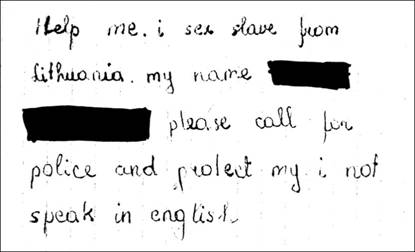
“Help me. I am a sex slave from Lithuania. Please call the police and protect me,” says a note which the Danish newspaper Ekstra Bladet got access to this week. It was a terrible view meeting the Danish police when they found the 19-year old Lithuanian girl in a lapidated Copenhagen apartment this week. The woman stayed in very miserable conditions.
“The kitchen was, in my opinion not suitable for people and there were cockroaches everywhere. Moreover, we found evidence that someone had managed to fit a padlock on the outside of the door into the woman's room,” says Trine Møller Andersen, head of the Copenhagen Police group against women trafficking.
The young Lithuanian woman lived in an inhuman nightmare in which she had been kept as a sex slave.
When she was not serving sex clients, who apparently could not feel the soggy conditions in the 'sex-nest', she lived in a spartan, unhygienic room with only a mattress on the floor and old, dirty bed linens full of cockroaches.
Outside the room the door was mounted a bracket made ready so it could put a padlock on - if the sex slave should get ideas about escaping.
But the woman had still succeeded in sending a cry for help to a friend in Lithuania over the Internet and asked her to contact the Lithuanian police to tell that she was incarcerated against her will.
And after the Copenhagen police on Monday received an official request from the Lithuanian police via Europol, they soon found the woman's 'prison'.
Help me
And it was a depressing sight that met them in the apartment where the woman lived and served men that her pimp brought to her.
The 19-year-old woman began to cry, but when she found out that it was the police, she gave a handwritten note to the female police officer who found her, which in English told that she was kept as a sex slave, that she wanted to contact the police and that she did not speak English. The woman's pimp, a Lithuanian 36-year old man, was also found on the site.
He was arrested and charged with violation of Penal Code provisions on trafficking. He was remanded in custody for four weeks in Copenhagen.
Miserable conditions
“The woman was in physically fine form. She had not been beaten. But she was shocked and scared and very influenced by the situation,” says Trine Møller Andersen, leader of the group against woman trafficking at the Copenhagen Police. She had never seen a similar case, since she started in the group in 2008.
The much older perpetrator had recruited the woman in Lithuania. Here he had got her drunk and had persuaded her to go to Denmark and work as a prostitute with the promise of good earnings as a pawn.
The man then transported her to Denmark and placed her in an apartment in a Copenhagen district, where she also served customers. The perpetrator found the customers, and the woman got only a very small payment. The woman had lived in Denmark for little over a week when the police found her.
The young woman from Lithuania is now at a women’s shelter. She will later return home to Lithuania in accordance with her own wish.
“It's the classic story of these women who do not have the longest school education and who are in desperate need of money, so they can be lured here,” tells Trine Møller Andersen to Ekstrabladet.
20% of Lithuanian victims are underage girls
Lithuania is a source, transit, and destination country for women and children trafficked for the purpose of commercial sexual exploitation. One estimate concluded that approximately 20 percent of Lithuanian trafficking victims are underage girls. Lithuanian women are trafficked within the country and to the United Kingdom, Germany, the Netherlands, Greece, Italy, France, and the Czech Republic for the purpose of forced prostitution. Women from Belarus are trafficked to Lithuania for the same purpose.
- U.S. State Dept Trafficking in Persons Report, June, 2009 [full country report]
- Bookmark :
- Digg
- del.icio.us
- Stumbleupon
- Redit it
- Posted by - (0) Comment
Want a genuine midsummer celebration?
Go to Lithuania’s pagan capital Kernavė!
Kernavė is a unique five mounds complex, honoured as being the first capital of Lithuania almost a 1000 years ago. The first settlers appeared here as early as in 9th-8th millennium BC, in the Epipaleolithic period. Since then until the very Early Middle Ages, the territory was continuously settled by people who left their traces. In written sources Kernavė was first mentioned in 1279 in the Livonian Chronicle and the Herman Vartberg Chronicle, where it was described as Grand Duke Traidenis’, the Great Duke’s of Lithuania, estate (1269-1282). At that time Kernavė was the most significant economic-political centre of Lithuania. In 1390 Kernavė was burnt in an attack by Crusaders. After the fire the wooden town and castles was never rebuilt, and the remaining residents moved to the top of the hill instead of staying in the valley.
In later years, the remains of the city were covered with an alluvial earth layer, that formed wet peat. It preserved most of the relics intact, and it is a treasure trove for archaeologists, leading some to call Kernavė the "Troy of Lithuania". For example, Kernavė has the oldest known medgrinda, a secret underwater road paved with wood. The road was used for defense and dates from the 4–7th centuries.
Kernavė is world known for its annual celebration of Joninės – Lithuania’s famous midsummer festival dating back to the pagan times, and since 1967 also for its traditional Rasa festival. For several decades this festival was not only a way to clean the soul, but also to protest against the humiliation of national consciousness and the forced implantation of Soviet traditions. Attempts to prohibit this festival were not successful.
Kernavė is famous for national celebrations of King Mindaugas (1200-1263) coronation day on 6 July. On that day a festival is held, where medieval authentic crafts, war games and folk music are presented. The craftsmen come from around the Baltics and neighboring countries.
- Bookmark :
- Digg
- del.icio.us
- Stumbleupon
- Redit it
- Posted by - (4) Comment
SU JONINĖM!
Happy Midsummer!
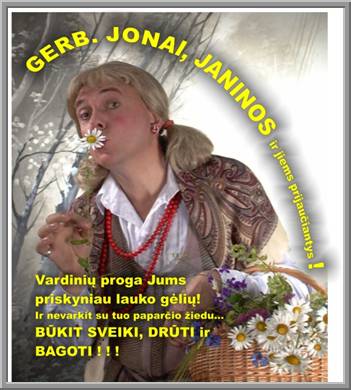
How to Celebrate a Lithuanian Midsummer
Midsummer Day in Lithuania is a celebration of the Summer Solstice as well as being a holy day sacred to St. John. The real festivities take place on the evening, prior to the date itself, which is 24th of June. That night, throughout Lithuania, people come together to celebrate Saint Jonas' Festival, also known as Jonines, Kupolines or Rasos.
|
Things you'll need: • Outdoor party place |
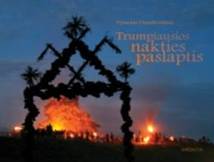 |
Step 1
Select an outdoor place in which to hold your party. Decorate your party space with fresh flowers and, if possible, raise a pole covered with flowers and herbs. Make garlands of fresh flowers and ribbons to be worn by all of the young girls and unmarried women present.
Step 2
Build a bonfire if at all possible. Lithuanian tradition calls for a tall pole crowned with a wooden wheel that has been soaked in tar or filled with birch bark, but you may have to make do with a small fire built in a fire pit or even candles. Whichever form of fire you use, if there is a member of your party named John, Jonas, or another similar name, that person should be the one to light it.
Step 3
Play Lithuanian music and encourage guests to sing Lithuanian songs if they know any. Lithuanian folk dances are also traditional, but if you do not know any of the old songs or dances you can still get a book of Lithuanian folk or fairy tales and reads some of them out loud to set the mood.
Step 4
Set out a feast consisting of traditional Lithuanian foods. Kugelis, the baked potato pudding that is the Lithuanian national dish, is pretty much de rigeur, and your guests may also enjoy such dishes as Skilandis (a smoked sausage-type meat), Salti barsciai (a cold soup made from beets), Cepelinai (potato dumplings with a ground meat filling), Vedarai (potato sausage) and Bulviniai Blynai (a type of potato pancake). Poppy seed cakes (Pyragas Su Aguonomis) and honey cakes (Meduoliai) make for an enjoyable, traditional dessert.
Step 5
Look for Lithuanian beers such as Utenos, Svyturys and Kalnapilis, Lithuanian Stumbras vodka, and Anyksciu Vynas wine. If you're the do-it-yourself type, you might like to try brewing up a batch of Lithuanian honey mead (Midus) or even Gira (also known as Kvass), which is made from fermenting this and that, usually bread, but sometimes other items such as barley, cranberries or caraway seeds. Caraway seeds can also be used to brew up a tea for non-drinkers, as can linden blossoms should you be able to acquire any.
Step 6
Take part in special Lithuanian Midsummer traditions like hunting for the magic fern blossom at midnight. This fern blossom, which should be gathered up in a silk handkerchief, is said to make the bearer wise, rich and happy, but is nearly impossible to find as it is guarded by monsters and witches. Another Midsummer game involves having unmarried girls and women float their flower garlands downstream (should you have access to a suitable body of water) to determine the length of time until they get married--the farther their garlands float, the sooner they will marry, supposedly. Yet another custom involves jumping over the bonfire and if the festivities go on all night long, revelers should be sure to wash their faces in the morning dew as they find their way home.
Read more: How to Celebrate a Lithuanian Midsummer | eHow.com http://www.ehow.com/how_4443202_celebrate-lithuanian-midsummer.html#ixzz0rZrzzi9x
Lithuanian Midsummer
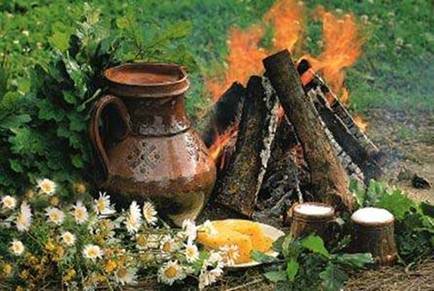
The holiday, in fact, is not the Midsummer Day, June 24, but the evening and night preceding it. The holiday coincides with the summer solstice. At the beginning of the 20th century it was observed all over Lithuania, now it is more popular in the northern and central parts of the country. Although St. John the Baptist occupies a very important place in the hierarchy of saints, the Church does not attach any great importance to the celebration of his nativity, which falls on the Midsummer Day. It is a festival of simple people, connected with the veneration of fire. Young girls adorn their heads with flower wreaths. A tall pole with a wooden wheel soaked in tar or filled with birch bark is hoisted at the top of the highest hill in the vicinity. Men whose names are Jonas (John) set the wheels on fire and make bonfires around it. In some places a second pole is hoisted with flowers and herbs. Young people dance round the fire, sing songs about rye, play games, men try to jump over the fire. The burning wheels on the poles are rolled down the hill into a river or a lake at its foot, men jumping over it all along. On the Midsummer Day people weed the rye and burn all the weeds.
On Midsummer Day's morning witches acquire special powers, they drag towels over the dewy grass to affect cows' milk. To save their cows from the witches' magic farmers shut them in cowsheds for the Midsummer Night and stick bunches of nettle in the door to scare the witches away. On Midsummer Day cows are driven out to pasture in the early after- noon when there is no more dew on the grass. Horses, however, are left to graze in the open throughout the night, or the witches magic has no effect on them.
On Midsummer Day dew has special healing powers. Young girls wash their faces in it to make themselves beautiful, older people do the same to make themselves younger. It is good to walk barefoot in dew on Midsummer Day's morning, for it saves the skin from getting chapped.
Midsummer Day and the time immediately preceding it is believed to have special powers. Medicinal herbs collected from June 1 to the Midsummer Day can cure 12 (some say 99) diseases. There are girls who save their Midsummer Day's wreaths all the year round. Great importance is attached to the Midsummer Day's fire. Its embers are brought home to make the hearth fire, and its ashes are spread in the fields.
There are numerous stories about the fern, which comes into blossom in the thick of the woods on Midsummer Night. He who finds a fern blossom becomes a wise, rich and happy man. But it is not easy to find a fern blossom, for horrible monsters and witches try to scare everybody away so that they could snatch the blossom themselves. Everybody who wants to find a fern blossom must know that only nine-year-old ferns can burst into blossom, that it is necessary to spread a silk kerchief under the clump for the blossom to fall onto, to draw a circle around oneself with a rowan stick hallowed in church, light a candle and pray in defiance of the monsters around. The blossom that drops onto the kerchief looks like a speck of gold. It is best to saw it under the skin of a finger or the palm, then nobody will steel it from you.
Only a very good man can hope to find a fern blossom and it can happen only once in his lifetime, Sometimes the fern blossom drops into a poor man's bast shoe unawares and suddenly the man acquires knowledge of the hidden treasures, of the speech of animals and birds, trees and bees. But when the man comes home and takes off his shoes, the fern blossom falls out, all the man's knowledge disappears.
Young people play games all through Midsummer Night until sunrise or until dew falls out, Girls float wreaths on rivers to find out their prospects for marriage. The farther their wreaths float the sooner they will get married. It is also very important which bank the wreath will stop at. Sometimes a burning candle or a bowl filled with burning tar is fixed in the middle of the wreath. A great number of Midsummer Night's superstitions and customs are similar to those observed on Christmas Eve. A girl will marry the man whom she will see in her dream walking along the straw placed across the bowl of water under her bed or who will dry his face on the towel placed beside her bed. The future husband will come from the direction in which she notices the first bonfire on Midsummer Night.
On the eve of Midsummer Night people adorn the wayside shrines which contain figurines of St. John. They also honour all Johns they know. This they do in various ways, for example, by fixing a wreath of oak leaves around his door. This is usually done in secret and the man thus honoured must guess whose job it was (or catch him doing it) and give him a treat.
The research done by the author of the present book in the past five years has convinced him that the customs of Christmas Eve and Midsummer Night, which coincide with the winter and summer soltices, are very closely connected. Sometimes the Christmas Eve table is covered exclusively with the hay mown just before Midsummer Night. Superstitions and customs of the two feasts are very similar. Christmas Eve customs are dominated by darkness, veneration of death and the dead, expectation, feeding of birds in a cart wheel, running round the house with a bowl of pudding, walking round the orchard. Those are all symbols of time. The summer soltice - Midsummer Night - is dominated by symbols of the sun, such as burning cart wheels hoisted high on poles which are adorned with wreaths of herbs and flowers, symbols of growth. In honour of the sun the fire from the bonfires is brought home to light the hearth, the fields are sprinkled with ash. Later these customs blended with those of Easter. The lighting of bonfires is the privilege of men who are called John. Sometimes it is the privilege of the oldest of all Johns in the vicinity. Those and other details in the celebration Of Midsummer Night testify that in the pre-Christian period Midsummer Night was celebrated as a feast of the sun.
- Bookmark :
- Digg
- del.icio.us
- Stumbleupon
- Redit it
Back to the USSR!
- Posted by - (6) Comment
|
BACK TO THE USSR! Text: Vin Karnila
ZAZ-965A Zaporozhets, produced 1962-1969
When people talk about how life was and how society was during the Soviet times, it is not a happy conversation filled with laughter. Yes, there is the laughter and warm conversations about family events during this time. There is also much laughter when talking about some of the absurdities of the Soviet system of government but in general, there is very little to generate smiles and good humor when you talk about how the Soviets imposed their will on the people. With one exception – their automobiles...
|
SO, HOWS YOUR ZHIGULI?
Text: Vin Karnila
This could have been a common question between friends, family and colleagues during the time of Soviet Russia’s occupation of Lithuania and the Baltics. When people talk about how life was and how society was during this time, it is not a happy conversation filled with laughter. Yes, there is the laughter and warm conversations about family events during this time. There is also much laughter when talking about some of the absurdities of the Soviet system of government but in general, there is very little to generate smiles and good humor when you talk about how the Soviets imposed their will on the people. With one exception – their automobiles.
As most of you know, buying an automobile during Soviet times was not a matter of months of visiting one dealership and another, looking at automotive magazines getting advice on what model to buy, asking friends and family what they think is the best model for you. You went to a government office and submitted a written request to buy a car. After a year or so you found out if your request was approved. If it was approved you were TOLD what car the government was ALLOWING you to buy (in some cases you were very lucky and were given two options) and then you submitted your order and waited another two or three years (possibly longer) to actually take delivery.
In spite of all this, when ever the conversation turns to cars, when ever you ask about the car a person had during these times or when ever you mention a car of the Soviet era the reaction is always the same. The response is always smiles, laughter and entertaining stories about their car and their automotive adventures. Because of this I thought it would be entertaining and interesting to look at some of these vehicles of Soviet times just to give you a bit of an idea as to what causes all this good natured reminiscing.
ZAPOROZHETS / ZAZ
The Zaporožietis or Zaporožkė, as the Lithuanians said it (Zaporozhets in Russian) was a series of subcompact cars designed and built from 1958 at the ZAZ factory in Soviet Ukraine ("Zaporizky Avtomobilny Zavod", or Zaporizhian Automobile Factory). Different types of Zaporozhets were produced until 1994.
In Russian, the name Zaporozhets means a Cossack of the Zaporizhian Sich. It can also mean а man from the Zaporizia Oblast.
Zaporozhets are still warmly remembered in the Baltics and many of the other ex Soviet Russian occupied countries. In fact I must say that if you just mention Zaporožietis, immediately you see big smiles and most often the smiles turn to laughter. The Soviet Zaporozhets was destined to become a "people's car", as it was the cheapest of Soviet cars and so it was affordable to the common workers. In fact the term “peoples car” is not quite accurate in today’s opinion. Most people today consider it the “worker’s car” in that this was the car that lower paid “workers” were allowed to buy. If your status and income was higher than the “common worker” you were allowed to buy a car a bit more desirable. In spite of its small stature it proved to be rather sturdy and well suited for the poor Soviet roads. All Zaporozhets were rear engine and rear wheel drive with an air cooled engine. The looks of this car resulted in several nicknames. One was "Zapor". This was just short for "Zaporozhets" but the problem was that the word “zapor” in Russian also means "constipation". Some called it the “Kuprius” (hunchback) due to the ZAZ-965’s rear shape. ZAZ factory workers supposedly never used these derogatory nicknames, using "Malysh" (in Russian this roughly translates to child) instead. Another translates to "big-eared" since the car had air intake scoops on its sides to cool down the engine in the rear of the vehicle.
ZAZ-965 Zaporozhets model was made between 1960 and 1963. Despite the fact that the design is almost identical to the Fiat 600 and Puch 500, ZAZ representatives say that the car was exclusively Soviet designed and created by Soviet ZAZ engineers jointly with colleagues from Moscow's NAMI and Moskvitch car plant. The first prototypes were actually designated as Moskvitch-444.
It was powered by a rear-mounted, air cooled OHV 887 cc V4 engine of partially aluminum design. Urban legend had it that the Zaporozhets engine was a starter motor in Soviet tanks. This is completely false. Any one that has knowledge of the Soviet tanks of that era will tell you this.
ZAZ-965A Zaporozhets
The “A” model was manufactured between 1962 and 1969. The most notable visible difference was that the ZAZ-965A had the air-intake "ears" removed. It also had a new engine which created more room in the engine compartment. Since Soviet car owners were expected to do much of the servicing themselves, this layout was more practical especially if you needed to work on the car in harsh winter conditions.
ZAZ-965A Zaporozhets
While there are not a lot of ZAZ-965s still driving on the roads of the Baltics, it is surprising how many you still see. As you see one driving down the road it’s interesting to see the reactions of the other drivers. Every one looks, they point, they smile and if there are others in the car you can see that they immediately start talking to each other. When you see one parked on the street you will almost always see a group of people around it, all with big smiles on their faces. They are talking and laughing about the ZAZ that they had or some one they knew had and reminiscing about all the adventures and long trips they took in it. Let’s face it, the 965 is cute as a button and it’s just not possible to not love the little thing.
ZAZ-966 Zaporozhets model was made from 1967 to 1974. It had a restyled body and no longer resembled the Fiat 600 BUT NOW very closely resembling the German NSU Prinz 4 which had been on the roads since 1961. Once again the Soviets said, NO NO NO it’s our design (why do they always do that). In addition to the “new style” body, the engines were slightly updated but the infamous "ears" were back.
ZAZ-968 Zaporozhets was produced from 1972 to 1980. While the outside was about the same as the 966 model. it featured the newer MeMZ-968 engine, which increased the displacement to 1.2L and the power output.
Vladimir Putin with his 1972 ZAZ-968 Zaporozhets
ZAZ-968M Zaporozhets once again had the ears removed and was made from 1979 to 1994. Special versions of this model Zaporozhets were equipped with additional sets of controls that allowed operating the car for driver’s without the use of one leg or with hand controls if they were without the use of both legs. These were given for free to the disabled people that the Soviets felt warranted the use of an automobile.
ZAZ-968M
You still see quite a few ZAZ-968s on the road here. They have proven themselves to be very durable cars over the years and are easy for the owners to repair and maintain themselves and with the higher quality of replacement parts available today they are also quite reliable. While one that has been preserved or restored and is in excellent condition may get a few closer looks they just don’t get the attention the original ZAZ-965s do.
ZHIGULI
Due to exporting and a number of manufacturing plants around the world producing these cars, this is the most internationally recognized car of the Soviet Union. What most of the world knows as the LADA was named the ZHIGULI in the Soviet Union. Actually the name of the first model was VAZ-2101 manufactured by VAZ (Volzhsky Avtomobilny Zavod – Volga Automobile Plant). This time there was no guessing as to the true origin of the design. The VAZ-2101 came about through collaboration with the Soviet Union, Italy and Fiat. The manufacturing plant’s construction was begun in 1966 on the banks of the Volga River in the Samara Oblast of Russia and the first cars left the production line in 1970. The first model produced was the VAZ-2101 sedan. In 1972 the first station wagon was produced the Vaz-2102. A new town, Tolyatti, named after the Italian Communist Party leader Palmiro Togliatti, was built around the factory to accommodate all the workers.

VAZ-2101 Sedan
The origin of the VAZ-2101 comes from the Fiat 124 sedan so all were front engine, rear wheel drive with a straight rear axle. Many modifications were required though so that the car could survive being driven on the terrible roads in the Soviet Union and in extremely harsh winter weather. Some of these modifications were the suspension being strengthened and raised to clear rough Soviet roads and the body shell was made from thicker, heavier steel. The first models were equipped with a starting handle in case the battery went flat in Siberian winter conditions, though this was later dropped. Another feature specifically intended to help out in cold conditions was a manual auxiliary fuel pump. As with most automobile models, there were revisions over the years which resulted in the model numbers being changed to 2103,2105, 2106 and 2107. These revisions were mainly changes to the engine size and some cosmetic changes however they all kept the “boxy” shape and style of the Fiat 124. In the late 80s the ZHIGULI name went away, the company was restructured and became known as LADA. At this point the “boxy” Fiat 124 style went away and the company started producing more modern styled vehicles.

VAZ-2102 Wagon
The VAZ-2101 was also destined to become a “people’s car”. While more expensive than the ZAZ models it was still priced so that the “middle class” (if there ever was such a thing in the Soviet Union) could afford one.
Henry Ford said of his Model – T Ford vehicle:
"I will build a car for the great multitude. It will be large enough for the family, but small enough for the individual to run and care for. It will be constructed of the best materials, by the best men to be hired, after the simplest designs that modern engineering can devise. But it will be so low in price that no man making a good salary will be unable to own one—and enjoy with his family the blessing of hours of pleasure in God's great open spaces."
This was the intent of the Soviets with the ZHIGULI. It was said that based on the average wage of a worker, it would take about eight years for a person to save up the money to buy a one. The ZHIGULI quickly became a hit with the people and became the car of the Soviet Union. While the ZAZ was surprisingly roomy for a car its size the ZHIGULI was roomier and more comfortable. Keep in mind though that the ZHIGULI was a very basic vehicle and far from anything even remotely close to being luxurious. It also proved to be quite sturdy and reliable and owners could easily perform maintenance and do repairs. Not only was the ZHIGULI the most popular car in the private sector it was also the car most used as taxis and by city, regional and federal governments. They even had special Police models.

ZHIGULI - Police
Now let’s try to clear up the confusion about the name. As I stated before, the actual name of the car is VAZ. The various models are VAZ-2101, VAZ-2102, etc. If a VAZ-2101 was destined for the Soviet Union it would be called a ZHIGULI or more specific ZHIGULI-2101. If the car was destined for outside the Soviet Union it would be called a LADA or more specifically LADA-1200. LADAs were exported not only to the Soviet Block countries but to countries all over the world. In fact there were so many LADAs built in Russia and in other countries that it remains the MOST PRODUCED CAR IN THE WORLD. Yes you got that right – more than any Ford, GM, Toyota, etc. model.
Now here’s the next question. How do you tell a ZHIGULI from a LADA?
1. If the steering wheel is on the right side it was made for export – It’s a LADA
2. If it has a diesel engine it was made for export – It’s a LADA (there were no diesel ZHIGULIs and no LADAs in the Soviet Union were diesel powered)
So if the steering wheel is on the left and it has a gasoline powered engine the only way to tell is to look at the rear of the car.
Example – Hear is a VAZ-2102 wagon I photographed in Vilnius last week.
Is it a ZHIGULI or a LADA?

VAZ2102
If you look at the logo on the front this won’t tell you anything because this is the logo for the VAZ company and will be found on both cars.
 VAZ2102-Front
VAZ2102-Front LADA logo
LADA logo
When you look at the back you can see that ZHIGULI is written in Russian. If it was a LADA, the word LADA would be written in the Latin alphabet. From this you can also tell that this wagon is the
VAZ-21021/ZHIGULI-21021 model because it shows that it has a 1300 cc engine. Based on this you would also know that it was manufactured sometime between 1978 - 1986. If it had a 1200 cc engine it would be a VAZ-2102/ZHIGULI-2102 manufactured sometime between 1972 – 1983.
Other than the name on the car, there were no other differences between a ZHIGULI and a LADA.

VAZ2102-Back
Now a moment ago I said that there were no LADAs in the Soviet Union that were diesel powered. I also said that the cars with the LADA name plate on them were for export. So what’s with the LADAs in the Soviet Union???
Actually, there where many LADAs on the roads of the Soviet Union. What happened was this. At the factory they would put the LADA name plate on a car as it was destined for export. Then they decided that the vehicle was more needed in the home market so they would send it to some where in the Soviet Union instead of exporting it. Another situation was a car with the LADA name tag would be exported. It would be sitting in a Soviet block country waiting delivery to some one then it was decided that it was needed in the home market and it would be sent back to the Soviet Union. This is how so many LADAs ended up being on Soviet Union roads.
My cousin Vytautas in Vilnius had one of these. He got it around 1980 (as he recalls he paid 6,000 Rubles for it) and drove it until about 1995. Even though the name on the car said LADA, never while he drove it and never after he got rid of it did he ever and has never referred to it as a LADA – ALWAYS it is ZHIGULI!!! I can’t speak for our good friends in Estonia and Latvia but I can tell you that in Lithuania the VAZ-2100 series was and still is ALWAYS called ZHIGULI never LADA.
Where did these names Zhiguli and Lada come from?
ZHIGULI came from the Zhiguli Mountains which are located in the area of the confluence of the Volga and Samara Rivers in Russia. LADA is a little more difficult to pinpoint. It is widely believed that the LADA was named after some ones daughter, wife or grandmother in the shortened version of the female Slavic name of Ladislava. Another theory is that it is the shortened version Ladislava who in Slavic mythology is the goddess of beauty, love and marriage. Dear readers, if you can shed any light on this question of the LADA name please tell us.
As I have mentioned a number of times the ZHIGULI was quite a reliable car. This statement may draw some reactions from some of our readers in countries where the LADA was exported to or produced. In many of these countries the LADA’s reputation was just the opposite. One of the countries LADA was exported to was Canada and I’m sure many of our Canadian friends could describe the car in most uncomplimentary terms. In fact I can recall some of the LADA jokes I would hear while visiting clients, friends and family in Canada.
Q: How do you double the resale value of a Lada?
A: Fill 'er up!
Q: Why do Ladas come as standard equipment with rear window defrosters?
A: So your hands stay warm while you're pushing it.
Jokes aside, here was the situation. The internally lubricated parts of the motor were of amazingly (or even surprisingly) high quality. It was very common that an owner would put over 400,000 kilometers on the engine before a major overhaul was needed. One of my students told me that his father had over 600,000 kilometers on his ZHUGILI before he needed a new motor. The problem was all the other components like fuel and water pumps, ignition system, generator, etc. These parts suffered from quality issues. To compound the matter, in many countries there were also issues with parts availability. So a LADA owner would have a problem with the car. They would take the car to the LADA dealership to find out that they would need to wait a number of days or even weeks for the part to fix it. Now a minor inconvenience turns into a major problem. The other problem was that often the replacement part would have the same quality issues as the original part and sometime in the future the owner would suffer a repeat of the same situation. As I understand it, these days the replacement parts for the ZHIGULI are of very good quality. As a result I have been told that a ZHIGULI/LADA still on the road today is actually a better car than when it was new if it has had many of these new higher quality replacement parts installed on the car.
VOLGA / GAZ
Unlike the smiles and laughter you get when you ask somebody about their Zaporožietis or ZHUGILI, when you mention VOLGA you get a serious look and an answer like – Oh, those were only for important people. I guess if you had a Volga you would be all smiles and giggles but the point is that not many people were allowed to drive a Volga.
The Volga was an automobile that the Soviets produced to replace the outdated GAZ-M20 Pobeda in 1956. Extremely modern in design for its time, it became a symbol of higher status in the Soviet elite. In addition to their role as status symbol, many were also used as taxi cabs, road police interceptors, and ambulances (estate/wagon models).
Manufactured by GAZ or Gorkovsky Avtomobilny Zavod (Gorkey Automobile Factory), three models series of the Volga were produced during the time of Soviet Russia’s occupation of the Baltics. The GAZ-21, GAZ-24 and GAZ-24-10.
The GAZ-21 Volga was produced in three series from 1956 to 1970. It was offered in a sedan and estate/wagon (GAZ-22). While designed by Lev Yeremeev it still copied automotive designs of western countries (so what else is new). The Volga was everything that the ZHUGILI was not. It was very well styled and comfortable for it’s time. With a 2.4 Liter engine it had some get-up-and-go.



GAZ-21 1st Series GAZ-21 2nd Series GAZ-21 3rd Series
GAZ-24 Volga
The GAZ-24 Volga was produced in two series. First series 1968 to 1977 and the second series from 1968 to 1985. It was produced in a sedan and an estate/wagon model and was powered by a 2.4 Liter engine. In addition to wanting to offer a more modern style body, the reason for the GAZ-24 was to correct design faults in the GAZ-21. Among the improvements were changes to the leaf spring suspension, new ignition and boot locks. One unique feature that the early series featured was a belt driven speedometer, which proved too complicated and was replaced with a cable drive. In 1977 the car saw the first serious modernization, this introduced "teeth" on the bumpers, retractable seat belts, front fog lights and new dashboard. The interior of the car saw the front bench seat replaced by two individual adjustable seats.



GAZ-24 Volga GAZ-24 Volga – side view GAZ-24 Volga – Police
The GAZ-24-01 Volga was introduced in 1971 was built to serve as a taxi. Changes included an artificial leather interior as well as slightly modified engine as well as the usual taxi equipment.

GAZ-24-01 Taxi
The GAZ-24-02 Volga was the estate/wagon version and it was introduced in 1972. The production of this model lasted right up to 1987. An ambulance version, the GAZ-24-03 was built on the estate's version.


GAZ-24-02 Estate GAZ-24-03 Ambulance
There was actually a third series the GAZ-24-24 Volga which was powered by a 5.53 litre, 195 hp V8 engine. This car was never available for private ownership and was used by the KGB.

GAZ-24-24 – KGB
The GAZ-24-10 Volga was the third model. This model had, in addition to cosmetic and styling changes, quite a lot technical upgrades to the power train, braking system, suspension and carburetor and cooling mechanism. Its production began in 1982 with a sedan model and in 1987 they began producing a wagon model. Even with all these upgrades, the model was way behind in regards to styling and technology compared to western vehicles and production stopped in 1992.

GAZ-24-10
As I stated before, the Volga was not a “peoples” car. It was a car that the Soviets only gave the “elite” permission to own. There are surprisingly still quite a few being driven on the roads of the Baltics and it is very interesting to see the reaction of people when they see a Volga these days. For the most part the reaction is – so what. If one is parked on the street it may, at the most, receive a quick cursory glance. Only if the car has been maintained or restored to pristine condition will it get any real attention and then the attention is more to condition of the car. The reaction is not big smiles and laughter reminiscing about good times they and their family in the family car. It is more like many are thinking – Oh, so this is the car THEY said I could not have.
While I have shared some information on the more common cars that the people of the Baltics were “allowed” to drive during Soviet Times I think I should also point out some of the other vehicles that were on the roads of the Baltics during this period.
MOSKVITCH
The Moskvitch 400 series is another smiles and giggles car produced from 1956 to 1965. Since it was never produced in numbers like the Zaporožietis and ZHIGULI it did not achieve the “people’s car” status but still it was designed to be affordable for the average person. I honestly do not know any one that owned a Moskvitch but I know that whenever you talk about the car or when people see one the response is always light hearted. This is quite understandable. I mean just look at it. It’s a cute little thing and you can’t help but fall in love with it. It’s kind of like the reaction westerners have when you mention Morris Minor.



Moskvich 407 Moskvich Estate 423 Moskvich 408
According to my research, there was never an automobile manufacturing plant in the Baltics during the time of the Soviet occupation. In Latvia and in Lithuania though there were factories producing busses and trucks.
LATVIJA
The Riga Autobus Factory (RAF), (Rīgas Autobusu Fabrika in Latvian) was a factory Latvia, making vans and minibuses under the brand name Latvija. The factory first opened in Riga in 1949 then in 1976 the construction of the new factory in Jelgava was completed. Their vans and minibuses were widely used throughout the USSR as circuit taxis (the Marshrutkas), ambulances and as a special services vehicles. These were not intended for private use. In fact the only time an private individual would get permission to have one of these was if they had more than five children.
Since the vehicle itself was referred to as a “Latvija”, this vehicle brought about a new expression to the Lithuanian language. For example, say you were standing on the sidewalk waiting for a circuit taxi and a friend passing by stopped to talk with you. Your friend could ask “what are you doing” and your response would be “aš laukiu Latvijos” which translates to – I wait Latvija. Or you and spouse are talking about the birthday celebration you will be attending tomorrow and the question comes up of how will we get there. The answer would be “mes važiuosime su Latvija” which roughly translates to - we will take the Latvija.


Latvija-977 Latvija-2203
UAZ Bus
I just needed to throw this in. Made by UAZ, Ulyanovsk Automobile Factory (Ulyanovsky Avtomobilny Zavod in Russian), you still see a surprising number of these. Where you most often see them is at the open air fruit and vegetable markets that are so common here. Obviously from looking at the photo you can see that these were made for military and service use but since they are practically indestructible people have found that they are great for hauling produce from the villages to the city.

UAZ Bus
These next two vehicles must be mentioned when talking about cars of the Soviet era. Not because they were popular because they were not. They were not for sale. They were only allotted to the absolute upper echelon of the Soviet government. These two cars were the symbol of absolute Soviet power. They were also the symbol of the contradiction of the Soviet’s form of communism. In a form of government that was supposedly for the people and for the workers, the common people were only allowed to drive Zaporozhets and ZHIGULIs while the leaders of this government of the people rode around in ultimate luxury.
CHAIKA
The Chaika, which means gull, is a luxury automobile from the Soviet Union made by GAZ.
Chaikas were one step down from the more prestigious ZIL limousines, and were issued to top professionals, party officials, scientists, academics, and other VIPs. For their larger size and more powerful V8 engines, Chaikas were also ordered in some quantity by the KGB. Nikita Khrushchev, although entitled to a ZIL, was known to prefer Chaikas, and kept one at his summer dacha. If you notice the front grills of the cars they display a very distinct emblem which represents the wings of a gull.



GAZ – Chaika convertible GAZ-Chaika limo GAZ-Chaika
ZIL
ZIL (Zavod Imeni Lihacheva - Lihachev Industrial Plant ) built the cars that where the ultimate symbols of Soviet power, used to transport high level politburo members. The ZiL limousine was the favored mode of transport for a succession of leaders. Stalin, Khrushchev, Brezhnev and Gorbachev all had one. After communism collapsed, however, Boris Yeltsin got himself a Mercedes. It is reported though that President Medvedev now wants to replace his Mercedes with a Russian produced limo.

Joseph Stalin’s ZIL limo
The version probably most recognizable is the ZIL-115 which is an armor-platted limousine, produced in the early 1970s. It was used by the top members of the Politburo, Soviet dignitaries on foreign visits and army officers, but it was also used for weddings, which was the only opportunity for civilians to use them. It was very well armored to protect the occupants from small arms fire and the floor was also bomb and booby-trap proof . The interior of the car was quite well made and very well suited to heads of state.


ZIL-115 limo ZIL limo convertible
So dear readers, these are the vehicles that generate the light hearted responses from so many people here in the Baltics. Maybe there are some other models that you could add to this list? Perhaps you have some stories or “adventures” you could share with us about these automobiles? The information I have shared with you, I must admit, just scratches the surface of what the personal transportation situation was like during these times so we would very much like to hear from you to give all our readers around the world more insight to the cars of the Soviet time.
Su pagarbe
Vin Karnila
Associate Editor
- Bookmark :
- Digg
- del.icio.us
- Stumbleupon
- Redit it
- Posted by - (1) Comment
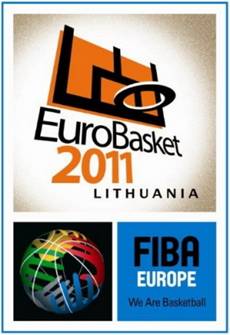
Mark your calendars
to be in Lithuania
31 August to 18 September
for
EuroBasket 2011
For 2011, LITHUANIA has been chosen as the host country for one of the most prestigious Sport’s Tournaments in Europe and the World. This is the second time in the Tournament’s rich history that Lithuania has been chosen to host the Basketball Championship of Europe.
EuroBasket 2011 will crown the Basketball Champion of Europe. While this is an important event for all European countries, it is especially important for a country like LITHUANIA that proclaims Basketball as its “Second Religion”.
The EuroBasket Championship saw its first tournament held in Geneva, Switzerland in 1935. Since then, every two years the greatest teams and talent have met for the “bragging rights” of Europe.
Throughout the history of the tournament our Lithuanian Team has done very well.
Clip about European mens basketball championship which will be held in
Lithuania 31 August – 18 September 2011.
In the second EuroBasket Tournament held in Riga, Latvia in 1937
Lithuania won the Gold with the final three results being
GOLD ![]() Lithuania
Lithuania
SILVER ![]() Italy
Italy
BRONZE ![]() France
France
Lithuania was the host country for the Tournament in 1939 with Kaunas acting as the host city.
Once again our athletes showed the best of the rest what they were made of
capturing the Gold again for a second time in a row with the final three results being
GOLD ![]() Lithuania
Lithuania
SILVER ![]() Latvia
Latvia
BRONZE ![]() Poland
Poland
After 1939, the Tournament was put on hold because of the war but it resumed again in 1946. Unfortunately though, due to the occupation of Lithuania by Soviet Russia, Lithuania was not allowed to enter a Lithuanian Team into the Tournament. The same was true for the other countries occupied by Soviet Russia. However, the top players from Lithuania and many other occupied countries were joined together with players from Russia to make up the basketball team representing the U.S.S.R. As you can imagine, with all of this combined talent on one team, the U.S.S.R. was a dominant force until 1990. In many of the U.S.S.R.’s victories, it was players from Lithuania that made up the nucleus of the team.
With Lithuania finally regaining its independence, 1995 saw for the first time in more than fifty five years a team representing the free Republic of Lithuania. In this Tournament played in Athens, Greece it was a beautiful site to see our players once again adorned in the uniform of our National Colors with “LIETUVA” emblazoned on them. They did not disappoint and picked up right where they left of by earning the Silver medal with the final three results being
GOLD ![]() Yugoslavia
Yugoslavia
SILVER ![]() Lithuania
Lithuania
BRONZE ![]() Croatia
Croatia
They followed up this success with two more medals.
2003 in Stockholm, Sweden saw Lithuania back on top
of the Basketball mountain of Europe with a Gold medal.
GOLD ![]() Lithuania
Lithuania
SILVER ![]() Spain
Spain
BRONZE ![]() Italy
Italy
In 2007 in Madrid, Spain they again brought home some hardware earning the Bronze.
GOLD ![]() Russia
Russia
SILVER ![]() Spain
Spain
BRONZE ![]() Lithuania
Lithuania
How will these past successes influence Team Lithuania’s chances for Gold in 2011???
Please allow me to share with you some facts to shed some light on Lithuania’s
dominance of the Tournament over the years.
Since 1935 there have been 37 EuroBasket Tournaments take place.
Due to the occupation of Lithuania by Soviet Russia, Lithuania was only able to participate in 12
of these Tournaments with a team representing Lithuania wearing the
Amber, Green and Red national uniform.
So please keep this in mind – Played in only 12 out of 37 EuroBasket Tournaments
Lithuania is 7th overall in medals
Lithuania is 3rd over all in Gold medals
Quite an accomplishment considering they played in only 35% of the Tournaments
Now what about the players?
Here is a list of players that received the MVP award for the entire Tournament
1937 – Pranas Lubinis
1939 – Mykolas Ruzgys
1995 – Šarūnas Marčiulionis
2003 – Šarūnas Jasikevičius
Here are the players that received the MVP award while playing on the
U.S.S.R. team during the occupation years.
1965 – Modestas Paulauskas
1985 - Arvydas Sabonis
Twice players from Team LIETUVA were the Top Scorers of the Championship
1937 – Pranas Lubinis
1995 - Šarūnas Marčiulionis
As you can see Lithuania has a history of winning and there is good reason to believe that this history will repeat itself in 2011. The players and the fans are still sky high after their come from no where win of the Bronze in last year‘s World Basketball Championship held in Turkey. Their only loss in that Tournament was to the Gold Medal winning team of the USA.
Combine that with the fact that they will be playing in Lithuania in front of Lithuanian fans that have traveled from all over the globe to cheer on their team and you have the formula for success.
So mark your calendars and make you reservations.
Round 1 is from 31 August to 5 September
This is the Elimination Round
This round will be played in the cities of Alytus, Klaipėda, Panevėzys and Šiauliai
There will be four groups of six teams fighting to go to the next round
All of Team Lithuania‘s Round 1 games will be played in Panevėzys.
Round 2 will be from 7 to 12 September
There will be two groups of six teams competing to go on to the Final Round
All of these games will be played in Vilnius in the Siemans Arena
Round 3 is the Medal Round
The eight remaining teams will do battle to see who goes home with the Gold
This round will be from 14 to 18 September
All of these games will be played in Kaunas in their new state of the art arena
We will keep you informed about the ticket sales as the information is released.
FOR FURTHER INFORMATION ABOUT THE PROGRAMME, VENUES AND TEAMS:
http://en.wikipedia.org/wiki/EuroBasket_2011
So make plans to come to LIETUVA to support
YOUR home team!!!

- Bookmark :
- Digg
- del.icio.us
- Stumbleupon
- Redit it
VilNews e-magazine is published in Vilnius, Lithuania. Editor-in-Chief: Mr. Aage Myhre. Inquires to the editors: editor@VilNews.com.
Code of Ethics: See Section 2 – about VilNews. VilNews is not responsible for content on external links/web pages.
HOW TO ADVERTISE IN VILNEWS.
All content is copyrighted © 2011. UAB ‘VilNews’.

 Click on the buttons to open and read each of VilNews' 18 sub-sections
Click on the buttons to open and read each of VilNews' 18 sub-sections 




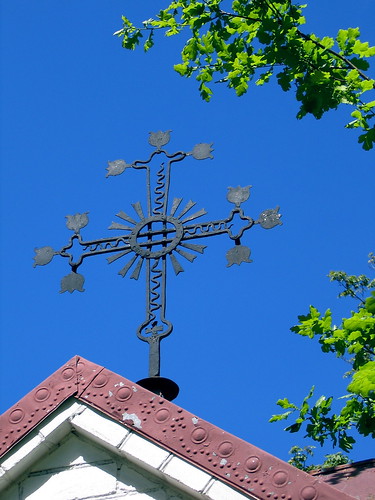

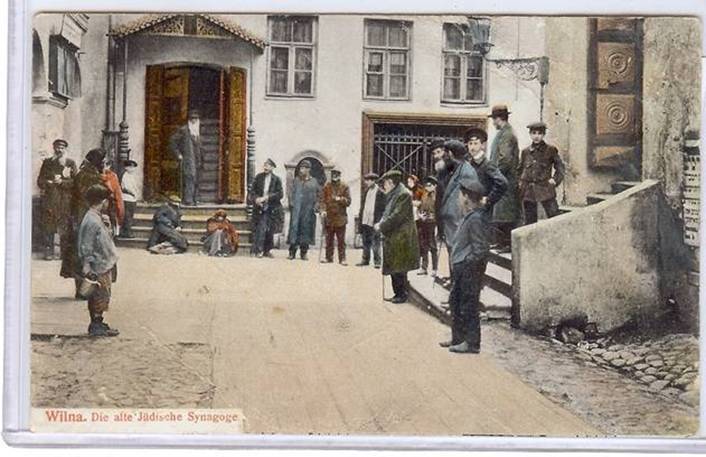

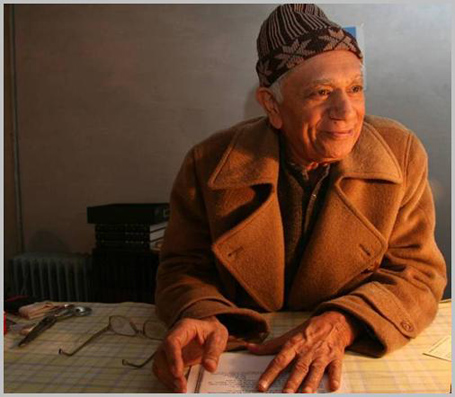
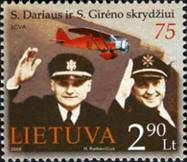


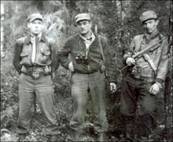


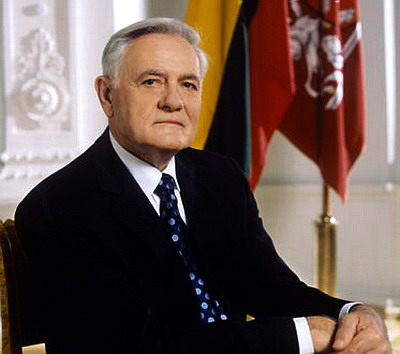
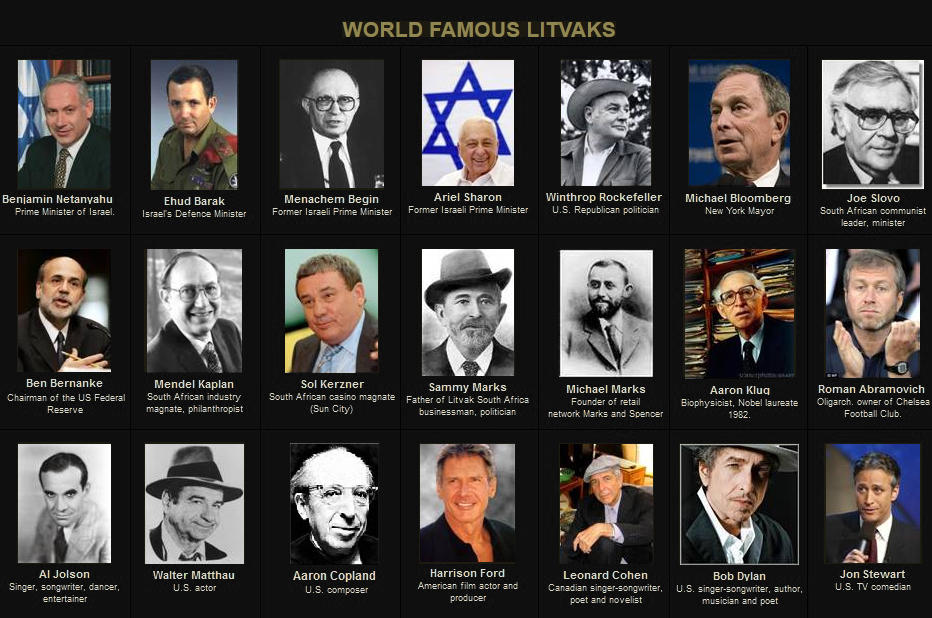












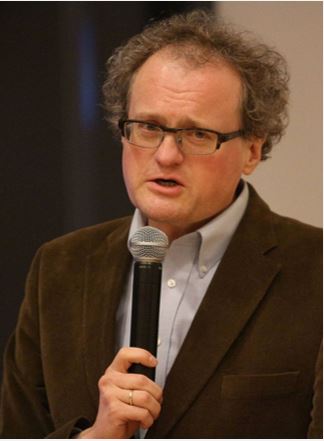
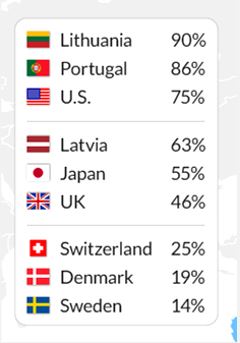
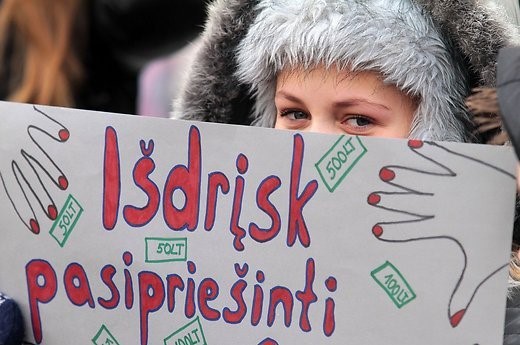


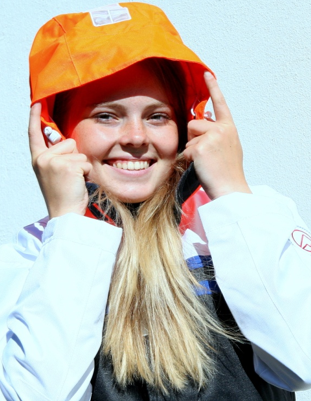
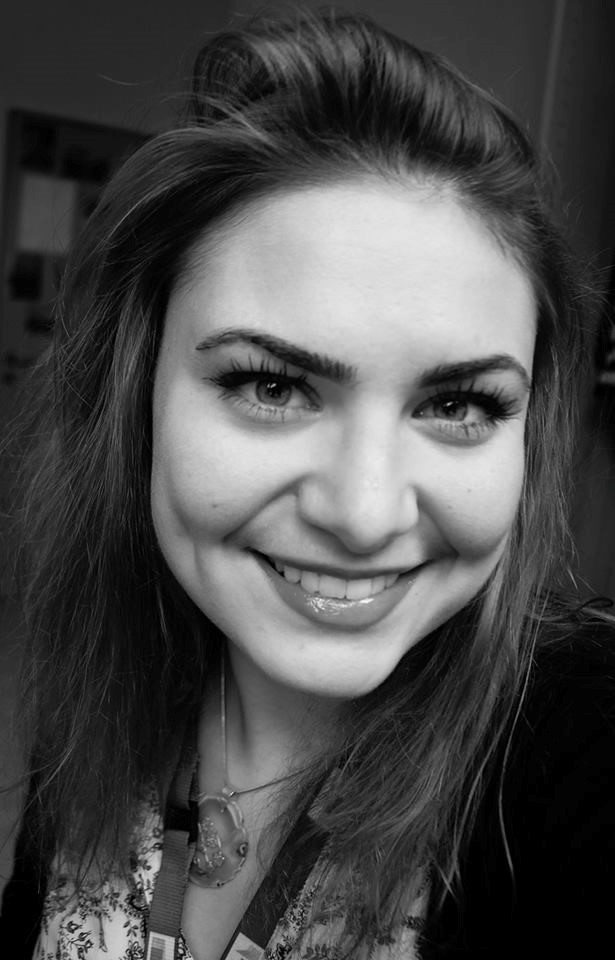
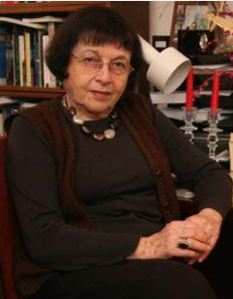
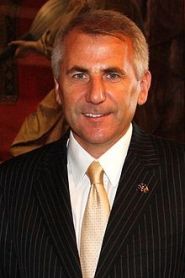
.jpg)
